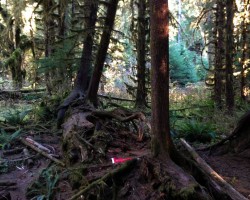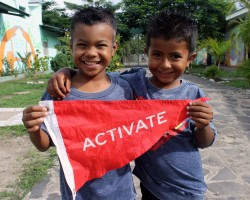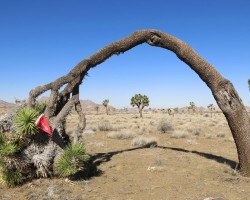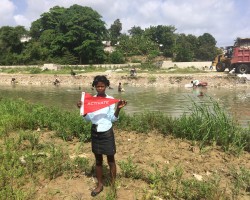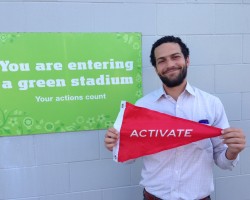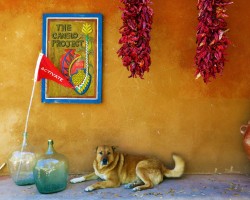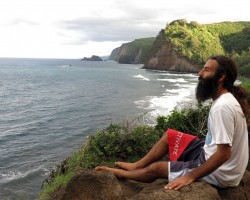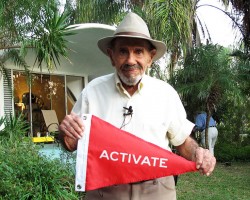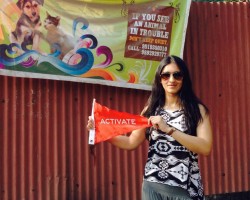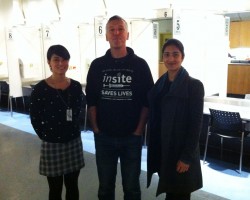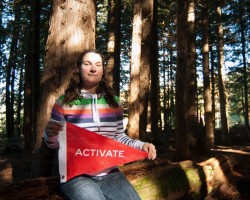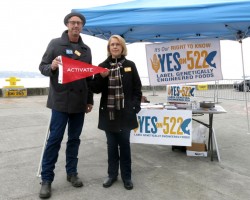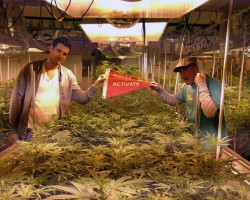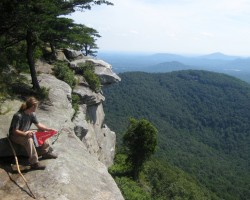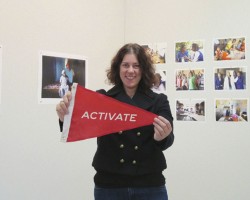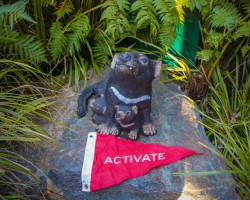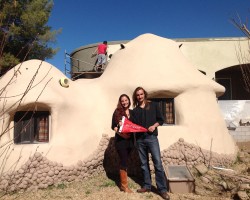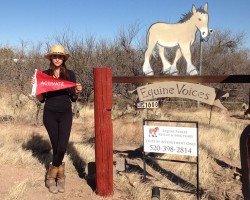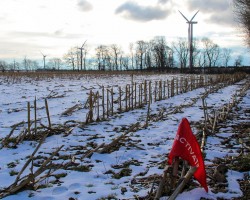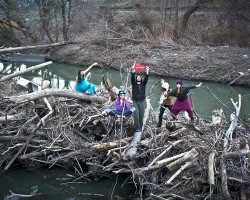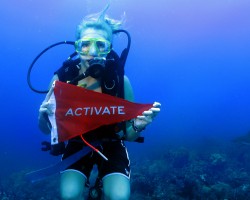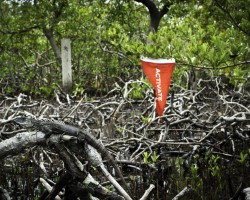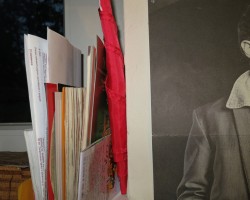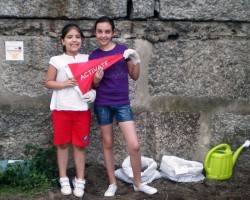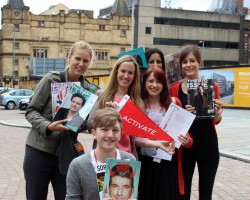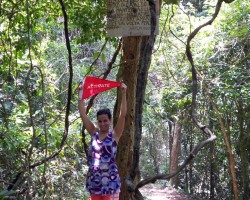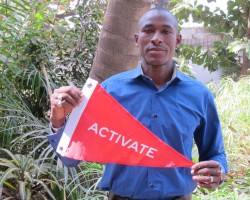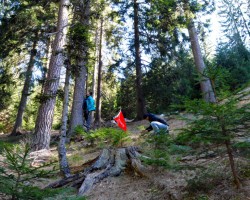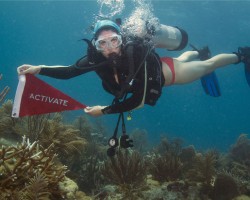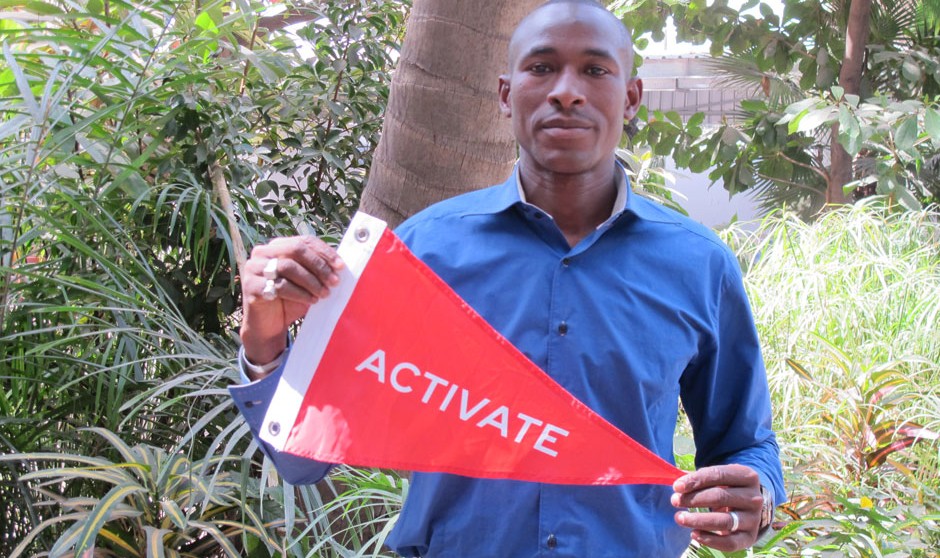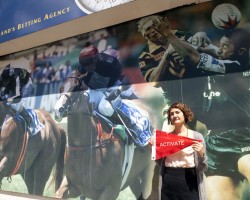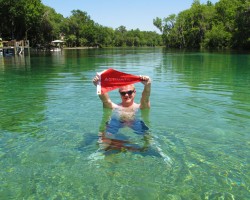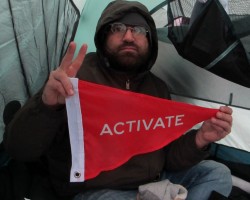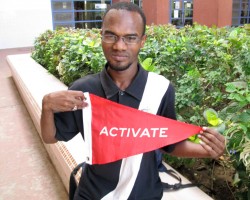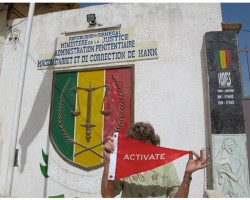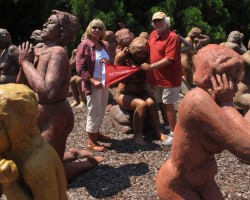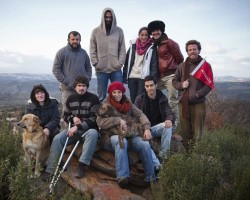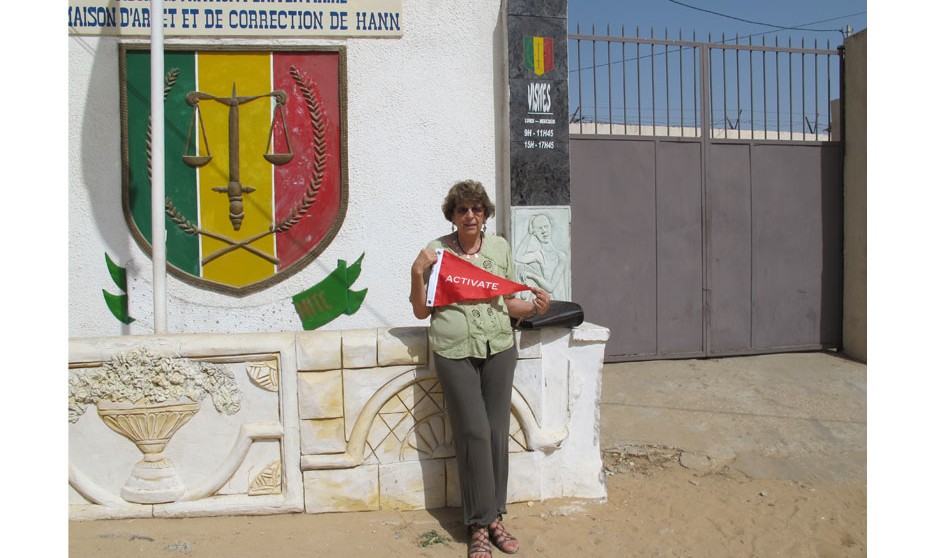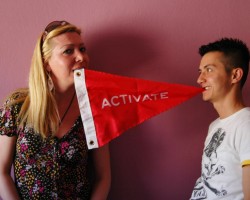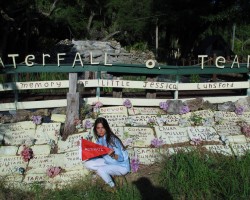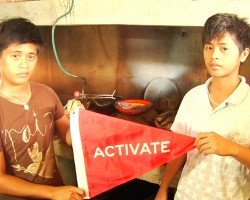Activate Project
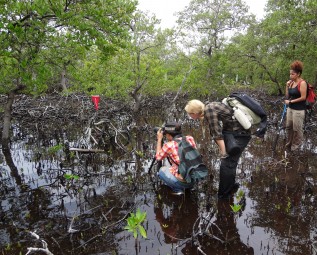
RAISE A RED FLAG
The Activate Project is open to anyone who would like to raise awareness about an issue important to them. The project started with 10 flags that are currently making their way around the globe: 1 in Brazil, 1 in Spain, 1 in Senegal, 1 in New Zealand, 1 in Florida, 1 in New York, 1 in China, 1 in the Philippines, 1 in Turkey and 1 in Portugal. As these flags pass hands from one concerned world citizen to the next, problems and solutions are being discussed. Awareness is being raised through the simple act of raising a flag. As the flags are being raised we will share them here with you. We also invite you to join. For more information on how you can get involved please email us at info@redflagmagazine.org
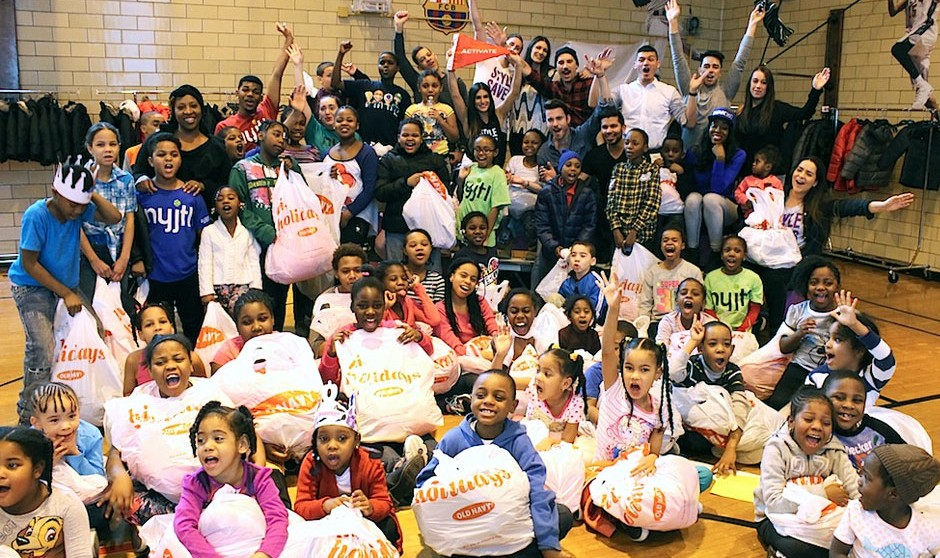
Flag # Brooklyn, New York
For our first installment of Coats for Kids, we partnered with IMG and William Morris Endeavor to outfit over 250 students from Brooklyn’s The Fresh Creek School with brand-new outerwear and winter coats. Taking place on Martin Luther King Day, Style Saves provided a fun-filled, fashion-focused event that promoted health, fitness and the spirit of giving back.
Youth Advocate and pro-athlete Tanyka Renee of Dunk360 co-hosted the interactive day and entertained students with squat races and freeze dance competitions, providing a fun spin on fitness. And when they weren’t working out, students were encouraged to tap into their inner creative genius and engage in arts and crafts projects. Perry Ellis and Nautica sponsored some of the winter gear and accessories provided to students, while industry pro and Style Saves President Rachael Russell gave individualized styling advice to each child. Together with the support of several members of the Style Saves family, each lucky attendee walked away with new duds to brave the coldest months of the season, a full belly courtesy of Nuchas empanadas and memories they’ll never forget.
Coats For Kids marks Style Saves’ first event in New York City made possible by the overwhelming support and fundraising efforts of our patrons. Recent events and activations including a luncheon hosted by Larsa Pippen at Fendi Chateau Residences in Miami Beach, an online auction on Charitybuzz.com and a in-store shopping experience at Vince in Bal Harbour Shops all contributed to the wildly successful outcome of this inaugural New York-based event.
Style Saves, now in its 4th year, is lead by FORD fashion stylist Rachael Russell and a team of fashionable philanthropists, in conjunction with The Miami Foundation. The organization raises funds through fashion and health events and is most recognized for its annual Style Saves Swim Fashion Show during Miami Swim Week. This year, the fashion show raised over $150,000, allowing Style Saves to host over 800 local students at the Adrienne Arsht Center for the Performing Arts of Miami-Dade County for its fourth annual back-to-school event. Students were gifted with brand new back-to-school uniforms, outfits and accessories. In three years Style Saves has styled and dressed over 5,000 students and now operates in Florida, Connecticut, Rhode Island and New York.
To learn more or get involved with Style Saves please visit www.stylesaves.org.

Flag #2 Olympic Peninsula, Washington
Location: Hoh Rain Forest, Olympic National Park, Olympic Peninsula, Washington, USA.
Off the coast of Washington, the Olympic Peninsula diverges from the mainland and slips into the Pacific Ocean – surrounding itself on three sides by the cold northern waters. On the western edge, shielded by the Olympic Mountains is a strip of temperate rain forest, the only of its kind in the continental U.S. As you wander through these woods you will meet Maple trees, Alders, Spruce and Cottonwood covered in blankets of moss and fern. Their shapes resemble tree gnomes and hobbits – the type of lure we only know through fairytales. There was a time when much of the land was covered in these forests and human life was established on its fringes. The medicines, food, resources, and refuge these forests offered was taken in small amounts and only as needed.
Today almost all of original forests in the U.S. have been logged or otherwise disturbed. Less than 1% are left in the east and 5% in the west. The majority of Americans will never get to see an old-growth forest. There is no national organization or government agency working to protect the remaining ancient forests nor to preserve recovering forests.
The forests on the Olympic Peninsula are protected as part of the Olympic National Park, but both nationally and globally, old growth forests and forest ecosystems are under threat. Through awareness campaigns the public has become somewhat familiar with the importance of standing up against deforestation, especially the global campaign to protect the world’s tropical rain forests.
The important piece for us to understand is that an old growth forest is very valuable. In fact, it’s irreplaceable. Like an elder, it carries knowledge from earlier eras. It has learned from years of life on this planet how to live on this planet. Imagine the internet 10 years ago. Now imagine it in 100 years. What the internet will be able to provide to humans in 100 years is unfathomable. It will likely reflect back to us billions of our expressions, desires, communications – our dreams, our stories, our facts and information plus a multitude of resources we can’t even imagine at this time. This is what an old growth forest holds beneath its shaded canopy. There is complex knowledge held by the vast network of mycelium under the soil that has been developing for centuries as each leaf, branch, bark and forest creature has made its way to the forest floor and returned to the soil – to the humus from which it came. The trees, shrubs, ferns, flowers, mushrooms, insects, mammals and other creatures have evolved together to a state of perfect balance after years of practice.
There is so much to be learned from old growth ecosystems. The conservation of these forests needs a collective voice and in time that voice needs to get louder.
A place to add your voice is among those who are part of The Old-Growth Forest Network, an organization created in 2007 by Joan Maloof, Professor Emeritus at Salisbury University in Maryland. The organization’s mission is to identify and help protect one forest in each county of the U.S. where forests could grow (approximately 2,370 counties out of 3,140) and let people know where they were located. “In this way, I believe, we could help stop the destruction of what old-growth remained, help some forests recover, and enable more Americans to experience an old forest.
>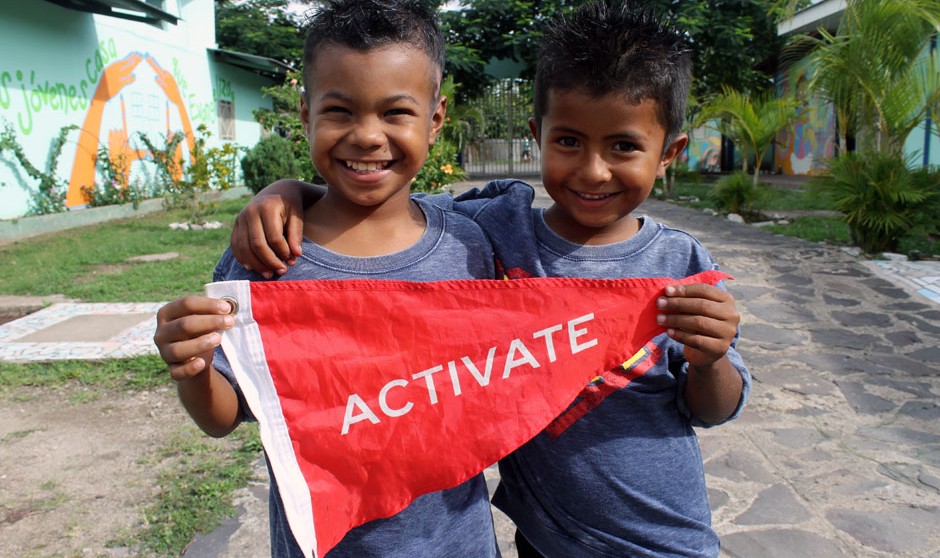
Flag #10: Nicaragua
Name: “Style Saves”
Location: Estelí, Nicaragua
by Regina Arriola Cauff
Style Saves is non-profit organization operating under The Miami Foundation that raises funds through fashion and art activations in order to provide brand-new clothing to underprivileged students. In just four years, the Style Saves cause has reached children in other countries including Peru and Indonesia, and most recently, Nicaragua. For seven days, myself and two members of the Style Saves team traveled to Estelí to work alongside the generous and struggling Saleisian sisters at El Centro Sor Maria Romero. Sor Anita, Sor Emilse and Sor Liliana are the devoted sisters that work day-to-day to maintain the progression and upkeep of their school and orphanage. Together, they provide free education to their students and a safe and loving living environment for them. On school days, their soup kitchen is open to any child for breakfast or lunch. The sisters offer social services including food donation to the hungry and loans for families in need. The livelihood of the Estelí community relies on the Saleisian sisters’ selfless work and attention.
Throughout our time in Estelí, we focused on creating a mentorship program and experience for both the orphaned children residing at El Centro Sor Maria Romero and local kids. Each day, we invited children to participate in arts and crafts, play dress-up and receive manicures, pedicures and haircuts. With generous donations,we provided students with brand-new clothes, shoes and accessories. We’ve funded the rebuilding of walls at El Centro, given jobs to those involved in constructing them, and even participated in it.
Keyding Torres lives across the street from El Centro. Nearly one year ago, her home burnt down from an electrical fire, leaving Keyding and her family with virtually nothing but gravel, dirt and unstable slabs of tree trunks for shelter. Keyding, her sister Jarixa and their parents Deisy and Ismael share a 14×16 living space that is endangering both their physical and mental wellbeing.
Style Saves patrons helped us raise a total of $4,000 for the Saleisian sisters at El Centro Sor Maria Romero. With these funds, we provided the materials for the rebuilding of Keyding’s home, gave over 50 children mini makeovers, and sent them home with hygiene kits filled with necessities like shampoo, soap, deodorant, hair combs, toothbrushes, toothpaste and underwear—basic items widely unavailable to these children.
We mentored the children we met in Esteli, listened to them and formed deep-rooted relationships with many of them. At the close of our week, we gifted the Saleisian sisters with over $1,000 in cash leftover from donations— providing them the means to continue their work. To put things into perspective, $20 feeds over 100 children with chicken for the day.
To learn more or offer your support to our next project visit http://stylesaves.org/
>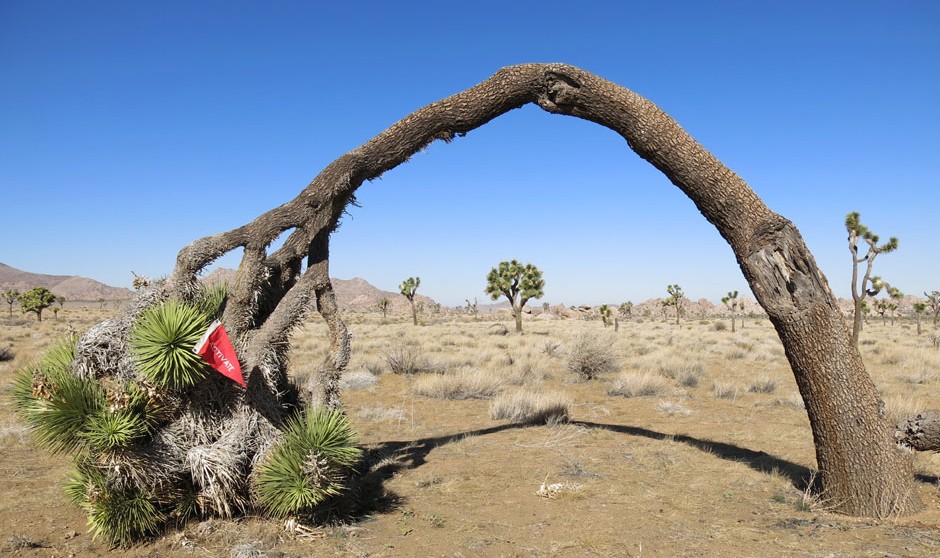
Flag #2: Joshua Tree, California
Location: Joshua Tree National Park, California
The Joshua Tree is a high desert plant, that dates back over two million years ago. Mormons gave the Joshua Tree its name in the early 19th century – because it reminded them of the biblical prophet Joshua with his arms upraised in prayer. They saw this plant as a spiritual sign of welcome into the Promised Land and used it as a guide to find their way from California to Utah.
The tree is believed to be a relic of a time that was more moist, but today has adapted to the arid desert climate. As part of its adaptation the Joshua Tree has a special relationship with the night. The leaves actually remain dormant during the day, and save their respiration cycle for the night-time hours when the air is cooler, and moisture can be conserved. It is also at night when the Pronuba moth pollinates the flowers. A number of observers have noted that the Joshua Tree flowers, which never appear fully open, reveal themselves more to the night, as well as releasing their fragrance into the night air. Joshua Tree is in its full glory in a moonlit desert night, as its white flowers glow in the eerie luminescence of reflected light.
In recent years, with the onset of more frequent and longer lasting droughts the tree has almost halted it’s reproduction cycle. At a study site in Wickenberg, Arizona, there have been no new Joshua Trees in over 30 years. Yet, each year in the spring they still produce their fragrant blooms. This past spring the Joshua Tree flowering was considered by locals and park keepers at Joshua Tree National Park in Southern California to be the showiest in recent memory. Scientists hypothesize that the severe drought suffered by California and other states in the western United States triggered the trees to produce more flowers and in effect more seeds as a desperate attempt to survive as a species.
This is just one story of one unique species of life on earth trying to survive the changes happening on our planet, be it climate change, habitat loss, scarcity of vital resources or facing competition instead of cooperation between humans and their own kind.
>
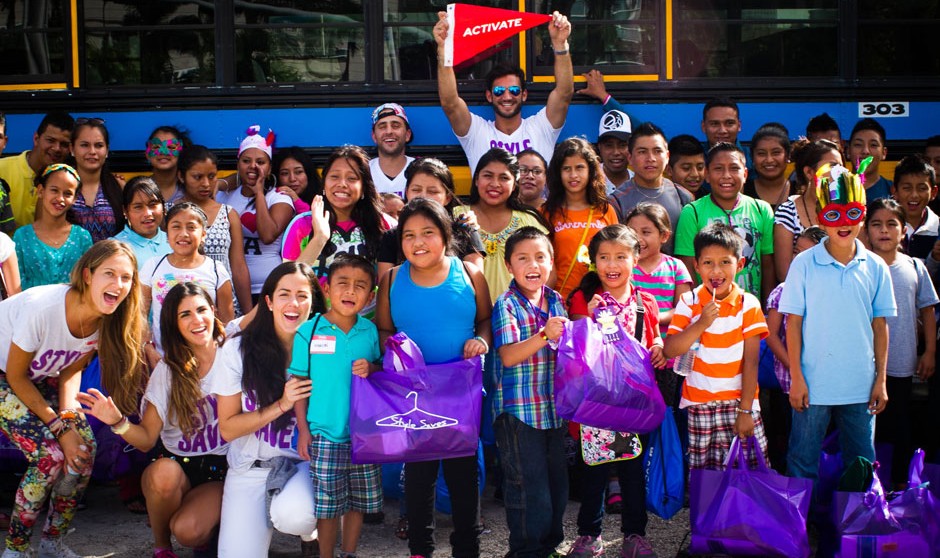
Flag #10: Florida
Name: “Style Saves”
Location: Miami, Florida
Text by Regina Arriola Cauff
Nearly 73% of children in Miami-Dade County live at or below the poverty line, with over 3,300 of those and their families currently homeless. Didn’t someone once say that you must be the change you wish to see in the world?
While on my honeymoon to Southeast Asia, my husband and I traveled to places like Chiang Rai, Thailand and Siem Reap, Cambodia, where I was exposed to a level of poverty that represented a world previously unknown to me. I knew that extreme destitution existed in the world, but coming face-to-face with the sad truth that most of the children I met would never know a different reality, seemed cruel. This firsthand understanding sparked an overwhelming eagerness in me to play an active role in the future of children without the opportunities of those who are more fortunate –And I didn’t have to look very far.
Upon returning to Miami, my hometown, I connected with Rachael Russell, a FORD fashion stylist and the Founder of Style Saves. At age 23, Russell started the organization after going back-to-school shopping with her younger siblings. It occurred to her that not every child is afforded the opportunity to begin the school year with stylish new clothes, and that just didn’t sit well with her. Soon after, Style Saves was born.
During our initial meeting, I knew that Rachael was someone I wanted to spend time with—she was equal parts driven, ambitious and knowledgeable about the non-profit world, and I wanted to learn everything she knew. Since then, and together with a well-rounded Board of Directors, we were successful at dressing over 700 students with brand-new, back-to-school outfits and uniforms.
The fourth annual Style Saves Back-to-School in Style initiative took place at the Adrienne Arsht Center for Performing Arts on August 16 and 17, and welcomed families from local organizations including Big Brothers Big Sisters, Lotus House, Mentor Network, Irie Foundation and The Guatemalan-Maya Center. Aside from shopping, the day included interactive activities like eye exams by Visionworks, manicures, pedicures, haircuts and yoga lessons for kids.
Style Saves has doubled its reach with each installment; a challenging feat accomplished through generous in-kind donations, fundraising efforts and the selfless dedication of each unpaid volunteer. In the spirit of the aforementioned words declared by Gandhi, the presence of change first comes from within.
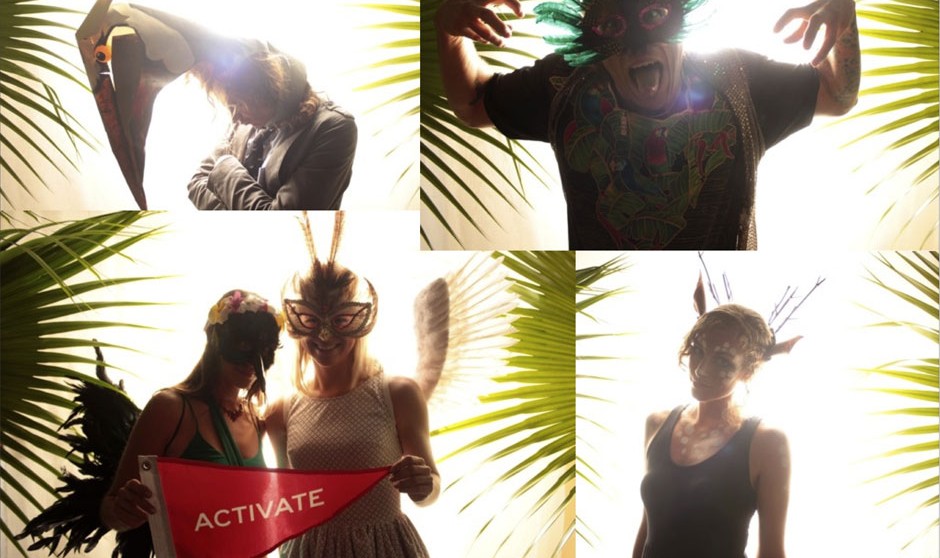
Flag #10: Miami, Florida
Location: Miami, Florida (Primary Projects Gallery)
Name: The Feast of Species
In May 2014, in celebration of the “Animal Issue”, Red Flag Magazine hosted a dinner party where each guest was required to arrive dressed as a creature of their choice. 50 guests in total sat at one long dinner table where they were invited to embody and represent that creature for the evening. A five course vegan dinner was served as each guest stayed in character to shed light on their creature’s special traits and on what each species needs to thrive in a world that is losing a piece of its natural habitat to human intervention every second.
A woman dressed as a snow leopard spoke her turn: ” I am a solitary creature. I live in high elevations, in cold craggy mountains. I am crepuscular, which means I am most active at dawn and dusk. I cannot roar. Instead, I hiss, and growl. When the wind blows hard I use my long fluffy tail as a blanket to shield my face. I am endangered and you will likely never see me in the wild even if you seek me out your entire lives.” The shark sitting next to her nods, he has his own burdens to bear. He may not be endangered, but not many seek him out. After media coverage the likes of “Jaws” and “Shark Week” most people are happy to never see a shark in their lifetime. For this reason people are also slower to stand up for their rights, and shark fining trade continues to decimate millions of sharks in our waters every year. Meanwhile, on average, only one human is killed from a shark attack off American shores every two years.
Many species are endangered and some of the dinner guests represented those who have already passed into extinction. Animals in their wild native habitat are becoming rarer and rarer, and it was clear from the joy on the faces of all the hooved, clawed, winged, and furry guests that it’s also becoming rare for humans to be the wild creatures that we are. “Wild” is more a concept than it is a real flesh and blood thing in the world. We have sectioned off patches of land and designated them as “wilderness”, but then we build roads, parks grounds, surveillance, dams and drills within those lines. The wild places are nearly gone and all the wild things must conform to the ways of the altered world we’ve created.
One guest, a very wise owl, addressed the table: “I believe those humans have many habits and what they call “rituals”. For example, sometimes before they eat they light candles and say blessings. I don’t know what that means, but I was hoping we could try it.” And so, in the soft candle light 50 creatures held hands and shared the ritual of a blessing.
>
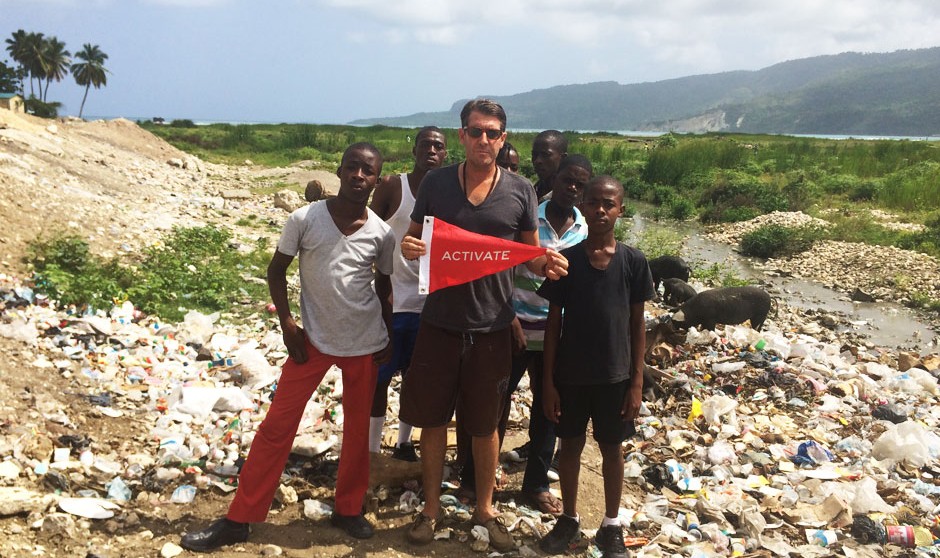
Flag #10: Haiti
Location: Jacmel, Haiti
Text and photos by Michael Capponi
I arrived in Haiti the first time on day 5 of the January 12, 2010 earthquake with a team of Miami Beach Firefighters, nurses and doctors. Nothing in life had prepared me for what I saw in those days to come. It was a short mission and when we returned I felt propelled to immediately return with more aid.
Two weeks later I came back with tents and more supplies. This is a picture of a little girl named Darline Dimanche and her brother Michaelson camped out in the mud. I immediately set them up into a temporary tent and gave them what I could; food, clothing , sheets etc.
During the first year I saw and clearly understood the root at the problems facing Haiti. As my heart and soul only wanted to help them all, I took on some serious responsibilities such as committing to giving a new shot at life to over 60 other beautiful children like Darlene along with their parents.
In December 2011 we transported 60 children and adults that were living in our temporary camp to the south east coastal city of Jacmel. Our new mission was to uplift these children to their greatest potential. We set up basic infrastructure with a focus on education. Most children had never gone to school. Today they are all in private school learning to use computers and learning English. Throughout my 75 mission trips to Haiti we have grown an unbreakable bond to one another.
The first photo is of me with our 100 Haiti Empowerment Mission students and parents holding the Red Flag to Activate awareness that there are many successful missions in Haiti and Haiti is not to be forgotten.
In the second photo Darlene is holding the Red Flag in Jacmel’s river mouth where children bathe and a town of 60,000 also dump their trash here. It’s a perfect storm for water born diseases etc. Unfortunately, once rainy season starts the river will get wider and all this trash will float into the rivers they bathe in.
For more information visit: Haitiempowermentmission.org
>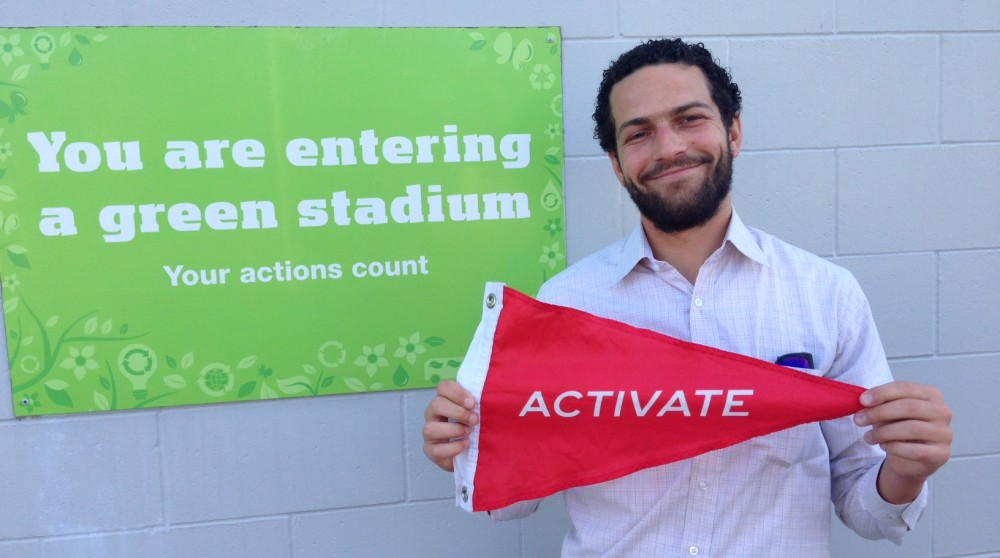
Flag #12: New Zealand
Location: Waikato Stadium, Hamilton, New Zealand
Name: Ben Lenzner
In March, April and May of 2014, the New Zealand Environmental Protection Authority (EPA) held a number of public hearings throughout the North Island. Trans-Tasman Resources Ltd. (TTR), an Australian mining company, plans to commence the largest seabed mining operation in the world off the west coast of the North Island of New Zealand. The hearings are the last chance the public has to chare their concerns about the proposed project. Sand on the west coast of the North Island is black and the seabed of the South Taranaki Bight is rich in iron ore. Where TTR intends to mine, they will strip the top layer of the seabed and separate the iron ore from the sand. TTR acknowledges that their operation will devastate the area of the seabed in which they will be mining. Blue Whales, Southern Right Whales, Maui and Hector Dolphins all migrate and reproduce through this region. Plume from the mining operation, the 24/7 sounds from the drilling machines and a number of other potential domino effects from this experimental operation may adversely impact these marine mammals and other types of marine life throughout the region.
In early April, I presented non-expert evidence to an EPA panel that will decide on whether TTR will be allowed to commence their mining operation. The hearings where inspirational and many residents of Raglan, the small town where I live, showed up to submit their thoughts about the proposed operation. Sometime in May of 2014, the TTR application will either be approved or rejected – the largest, most experimental seabed-mining endeavor ever to commence on this here globe. Below is an excerpt of the evidence I presented that early April morning:
“In a recent article on ocean based mining in the March 28 edition of The Guardian Weekly, Sylvia Earle, an oceanographer and explorer-in-residence for National Geographic states, “It’s like a land grab. It’s a handful of individuals who are giving away or letting disproportionate special interests have access to large parts of the planet that just happen to be under water.” She continues, “What are we sacrificing by looking at the deep sea with dollar signs on the few tangible materials that we know are there? We haven’t begun to truly explore the ocean before we have started aiming to exploit it.” And in a March 2014 video report on BBC World News online, Nii A. Odunton, the Secretary General of the Kingston, Jamaica based United Nations governed International Seabed Authority stated in regards to seabed mining exploration, “Those interested and who can put together the resources, the finances and technology to go recover them (i.e. ocean based rare earths) will be able to get as much of it as they want.” This statement, by an individual in power and given the authority of global oversight into the present and future of seabed mining and other forms of seabed extraction within international waters further reinforces one of my central fears about the core question of today’s hearing, “Should New Zealand, at this moment in time, allow seabed mining to occur off its West Coast?
How do we know what the negative impacts of seabed mining might be if we can’t see it or hear it or feel it or smell it or taste it or even begin to understand it? Trans Tasman Resources has acknowledged that the immediate areas of the seafloor where sand extraction takes place will destroy that area of seabed. Furthermore, they also concede that seabed mining has never taken place before on a scale they are requesting and never in a marine environment as we have off the west coast. They certainly don’t know what the future environmental impact of this mining will be. Neither do we. In fact, no one really does. Perhaps most disconcerting in my mind and most probably for the marine life that lives and migrates through these underwater regions will be the constant plume that is bound to have multiple effects on the amount of oxygen in the water, as well as affects on the multi-layered food pyramid of that area of the Tasman Sea.
Mining and the extraction of precious metals, oils, rocks, minerals and rare earths have overwhelmingly had negative effects on the environment. The environmental damage has been astronomical throughout the globe. The Tar Sands of Alberta, Canada have been shown to have future detrimental impacts on global warming. The Marcellus Shale in eastern North America, where a boom in fracking, a natural gas extraction method, has impacted natural water supplies across the state of Pennsylvania has also brought profound negative impacts that were never predicted. If one uses Google Earth to see the scars of these industrial methods of oil and gas extraction, it’s very evident, very clear, their impact on the surrounding natural environment. What is scary about seabed mining is on that very minimal level, a quick Internet search with our naked eye, a bird’s eye view, we won’t be able to see nor critique the impact of seabed mining. If one goes onto the New Zealand registered Internet homepage of Trans Tasman Resources, the tab one must click for further information on their proposed Seabed Mining is titled, “Iron Sands.” This is disturbing and can only make me think of the devastation wrought by the Tar Sands of Alberta, Canada. Tar Sands. Iron Sands. There seems to be a parallel.
The Merriam Webster dictionary defines an experiment as “a scientific test in which you perform a series of actions and carefully observe their effects in order to learn about something; or, something that is done as a test; or, something you do to see how well or how badly it works.” What sort of experiment might this Pandora’s Box open up off our coasts? José Marîa Figueres, former president of Costa Rica and co-chair of the Global Ocean Commission once suggested that the high seas be a no-go area for commercial exploitation (apart from shipping). Figueres was recently quoted in The Guardian Weekly of March 28,
Do we know enough about the seabed to go ahead and mine it? Do we understand enough about the interconnection between the seabed, the column of water, the 50% of the oxygen that the ocean produces for the world, the 25% of the carbon that it fixes in order to go in and disrupt the seabed in ways that we would if we went in and started mining? I don’t think so, not until we have scientific backing to determine whether this is something good or bad for the planet.
Why take advantage of an area of the world that is so critical to our well-being only for private profits? The economic gains are still unclear and if anything, what the New Zealand government will receive will be petty in comparison to the returns that Trans Tasman Resources will be reaping. As a student in this country, I say let us re-think this “deal” more clearly and methodically.
I stand here unwilling to put my support behind an extraction technique that undoubtedly has the potential for numerous and long lasting negative impacts on our environment and future generations of New Zealanders and the 195 or so other countries on this planet that we call our neighbors. An April 17, 2013 TV 3 report on seabed mining titled, Stripping the seabed: Bonanza or disaster? made clear that much of this iron ore will make its way to China and specified that this ore, New Zealand’s ore, it’s earth, will likely be used in China’s defense industries. I ask you, do we want iron ore off the coasts of New Zealand to be contributing towards the further militarization of this planet? Because should we agree to allow seabed mining take place in New Zealand, these global inter-connections will be difficult to refute.
We as global citizens are at a crossroads. Do we as a society give the green light for companies to pursue the extraction of rare earths at environmental costs to the planet that we have yet to ascertain? Do we, one day as grandparents, want to tell our grandchildren that we supported seabed mining or that we decided to take the high road, the moral and ethical path forward and that we decided to take a stand in 2014, that in fact our seabed is not for sale, that money and industry and economics is not what our pivotal values are centered around.”
For more information on the issues surrounding seabed mining off the west coast of New Zealand, check out the homepage of Kiwis Against Seabed Mining (KASM)
For further information on the EPA hearings
More Resources:
http://www.bbc.com/news/business-26611073
>
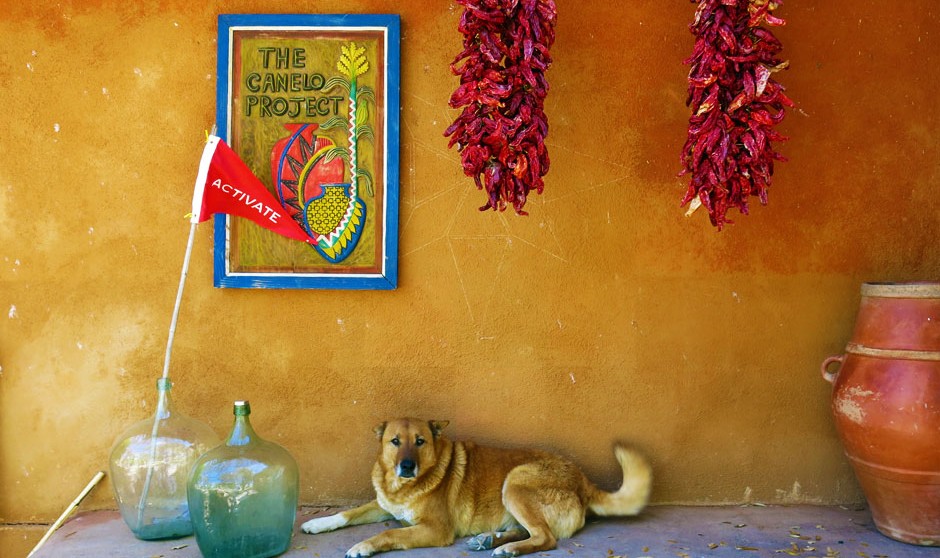
Flag #2: Arizona
Location: Canelo, Arizona
Names: Bill and Athena Steen
The Canelo Project is a small non-profit organization Bill and Athena Steen founded in 1989 and whose work centers on the theme – Connecting People, Culture and Nature.
The tiny town of Canelo, in southeastern Arizona, is home to The Canelo Project and the center of many of our activities . They rebuilt the old adobe ranch house and complex of buildings to function as a place where people of different backgrounds and cultures could come together to share in an ongoing exploration of living, building, the arts, music and regional foods.
The Steen’s have developed it as a center for learning, research, demonstration and cross-cultural gatherings. Their ongoing annual activities revolve around workshops, tours, intern programs and writing. The focal point of their work is handcrafting simple, small-scale and comfortable shelter that is built primarily with local and natural materials. In that pursuit, we have evolved a unique straw bale and clay wall system that is finished with beautiful clay and lime plasters – instead of paint – sculptural wall carvings, earthen floors and clay ovens.
The Canelo Project has inspired many to get their hands in the earth and to use that same earth upon which we stand to create the dwellings in which we live and gather. Learning to build your own dwelling from natural materials and designing the interior with the vision of your own creativity brings humanity and what makes each of us unique back into the places we live. In a world developing so rapidly and unsustainably these building practices and the sanctuary of the Canelo Project provide a place of respite for the global citizen looking for a new way to build our future world.
>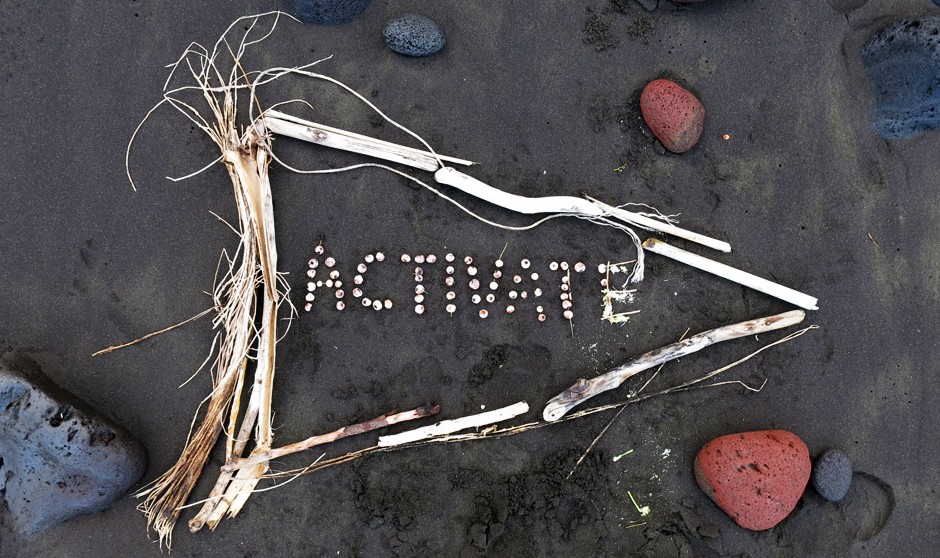
Flag #2: Big Island, Hawaii
Flag #2: Big Island, Hawaii
Location: Pololu Valley, Big Island, Hawaii
Name: Ganesha
The Pololu Valley is the first of a chain of seven valleys on the island of Hawaii. To the Hawaiian people, these valleys are sacred. Waipio Valley, the valley at the center of the seven valleys, is known as the Valley of Kings. It is said that Waipio was the home to the Hawaiian kings that ruled the islands.
At the northern ridge of Pololu Valley you can see all the seven valleys opening to the Pacific Ocean. At the valley’s floor there is a river cutting through a lush tropical forest that spills out to a black sand beach. The dark sand is a reminder that this island is still in creation. There are five volcanoes on the island and three are still active. Since 1980 over 600 acres have been added to the island from ongoing lava flows. In this sense the island is a young island and its spirit is one of change and renewal.
>
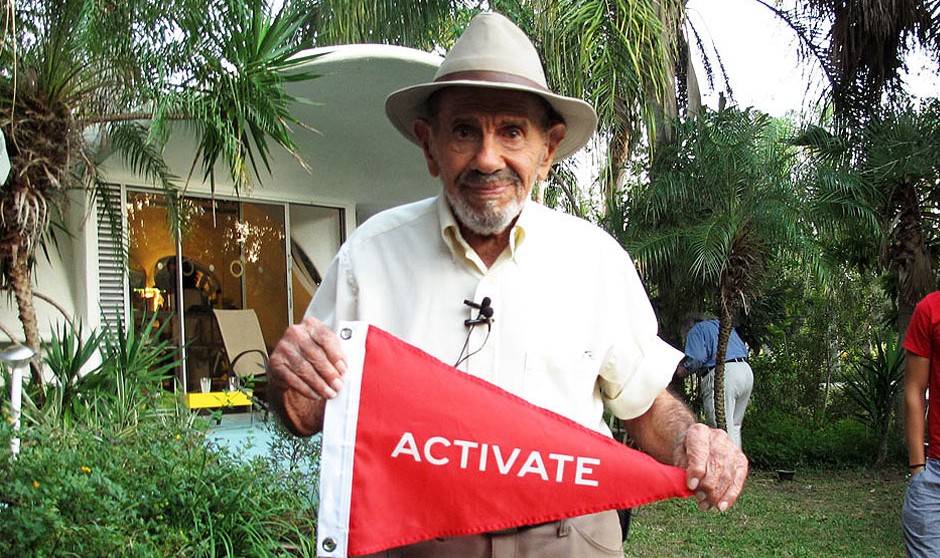
Flag #2: Venus, Florida
Location: The Venus Project in Venus, Florida
Name: Jacque Fresco
The Venus Project describes itself as “an organization that proposes a feasible plan of action for social change, one that works towards a peaceful and sustainable global civilization. It outlines an alternative to strive toward where human rights are no longer paper proclamations but a way of life.”
Jacque Fresco, its founder, was born in 1916 and at age 98 he still leads tours around Venus Project’s 21.5 acre research center with enthusiasm, indefagitable energy and infectious optimism for the future of human civilization. He is a futurist and self-proclaimed “social engineer” with a grand vision and design for an optimal human civilization that “celebrates the vast potential of the human spirit.”
On the property of the Venus Project, Jacque outpaced us along live oak and saw palmetto trails, past glittering ponds with Florida alligators sunning on their banks, to the futuristic structures he designed and built which are used to display live models and digital designs of a civilization that operates on a resource-based economy rather than on money, where food supply is no longer an issue and where civilizations can live on both land and sea without leaving a negative impact on ecosystems.
The charismatic Fresco has spoken at conferences around the world and has authored and produced a series of books and documentaries detailing the features and methods for engineering his vision. His book “The Best That Money Can’t Buy” goes into detail about the advantages of a resource based economy.
The Venus Project is named so after the town its research headquarters is located, not after the planet of Venus, although the name fits quite well with with Fresco’s forward thinking principles.
For more information on Jacque Fresco and the Venus Project visit:
>
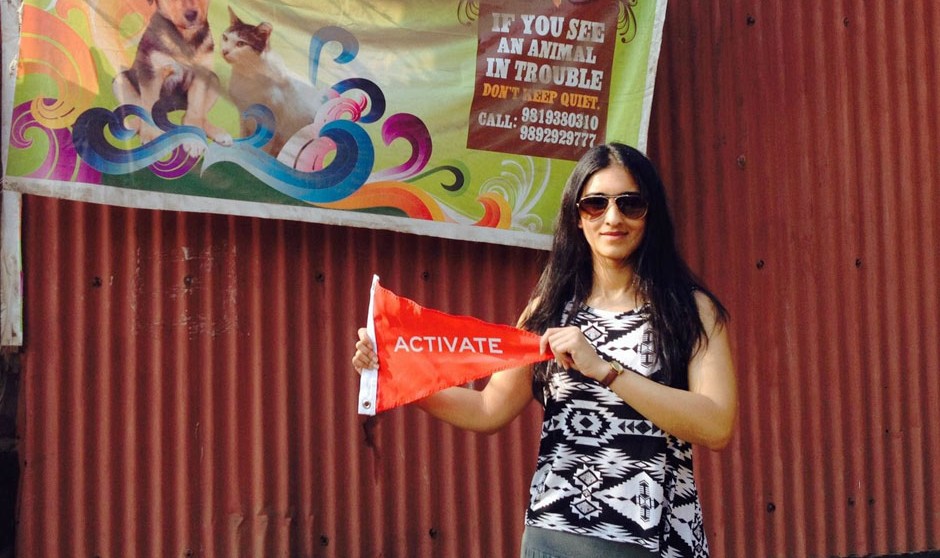
Flag #13: Mumbai, India
Location: Mumbai, India
Name: Raseel Sehmi
“If you see an animal in trouble don’t keep quiet” – this is the motto of a small non-profit called Animals Matter to Me. I ended up visiting this non-profit, tucked away in the suburbs of Mumbai in December 2013. Every year my family donates to a different cause and this year we decided to support stray dogs – a pervasive part of the city. There are two sides of the issue. On one side there are people who want to get rid of these ‘nuisances’ (imagine men and women biking to work in the early hours who are continuously chased and attacked by seemingly rabid dogs). And on the other side there are animal activists who want to save these dogs from being tortured and dying. AMTM is one of a few non-profits focusing on rescuing dogs (and other animals) and providing services like vaccinations, with the intention to make the streets of Mumbai ‘safer’.
This was the issue I wanted to ‘activate’ initially. But a story told to me by the cofounder of AMTM resonated even more – it’s the common story of extortion. Most non-profit workers often have thankless jobs, and any publicity of their work and the cause they serve is welcome. However, in this case (and many more I’m sure), publicity from a famous Indian actor ended up threatening the lives of these cofounders. Upon news of the actor’s support and assuming a hefty donation was made, several political gangs (or parties) harassed the non-profit for money. It took several months before the harassment stopped, and thankfully no one was injured in the process. This is shocking yet unsurprising given the prevalence of corruption in the country. It saddens me that such selfish acts hinder the positive societal change that can be made, and it certainly does not make the streets of Mumbai safer. Extortion is a much more dangerous encounter than stray dogs, I’d say. Yet it is encouraging to see that social workers still persevere despite such roadblocks.
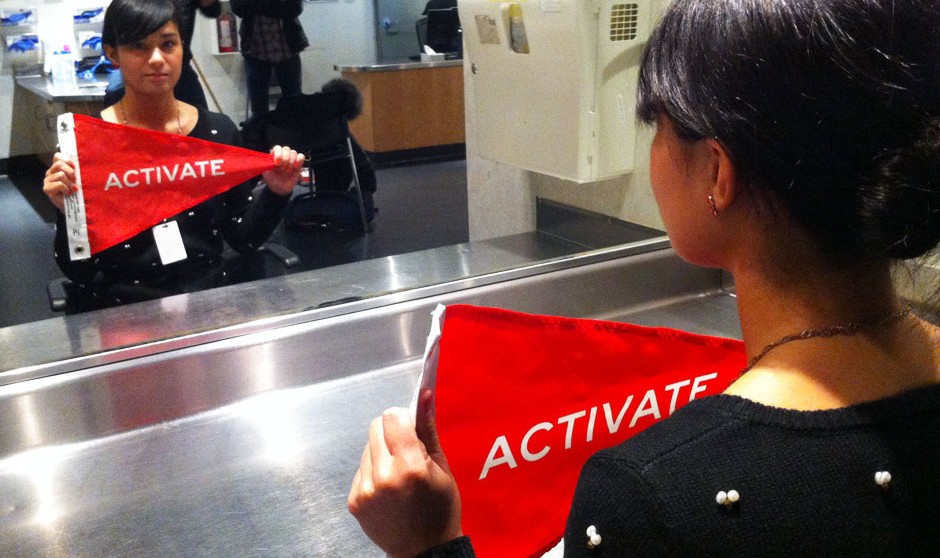
Flag #13: Vancouver, British Columbia
Location: Vancouver, British Columbia
Name: Aki Kaltenbach
Insite is North America’s first and only legal supervised injection site and sits in the heart of Vancouver’s Downtown East Side, an area notorious for a high incidence of poverty and drug use. Insite is a clean, brightly lit facility with a row of mirrored booths where users can inject drugs under medical supervision.
Aki lives in an apartment in one of the many new developments in the area and is part of the increasing gentrification of one of Canada’s poorest neighborhoods. Although controversial, this gentrification has lead to an incredibly diverse community with hipsters selling $3 gourmet doughnuts next to pawn shops and high end restaurants opening up across from Pigeon Park.
September 2013 marked Insite’s 10 year anniversary. With more than 2 million visitors to date with up to 800 visitors per day, Insite is a part of the fabric of the community and continues to receive public support in Vancouver and across the country despite numerous attempts to stop it – most recently by the federal government – from operating.
>
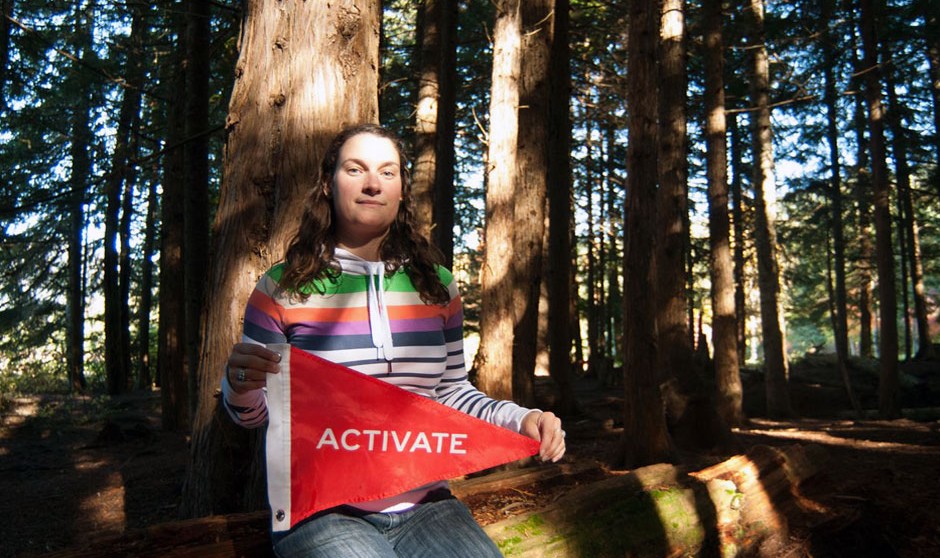
Flag #2: Whistler, British Columbia
Location: Whistler, BC, Canada
Name: Melanie Tardif
It was a day of celebration for Melanie Tardif when we met up with her in the Whistler woods. It was a beautiful Autumn Sunday and she had just been elected Vice President of the board of AWARE (Association of Whistler Area Residents for the Environment) – a group whose work is focused on protecting “the fast vanishing wilderness in our backyard.”
British Columbia is a wealth of wilderness with its own share of issues from logging, to mining, to the pipeline controversy and the constant need to keep a balance between the interests of the people and the interests of industry. Among its citizens are the indigenous members of the First Nations who also bring their own set of standards to how to interact with the land and its waters. It is often easy to agree that the environment needs to be preserved and cared for, but how and where those lines are drawn is where the challenges and conflicts arise.
One of the most controversial issues in the area is bear hunting. British Columbia issues permits by lottery each year to hunt both black and Grizzly bears. The numbers allotted are low, especially for Grizzlies, but to many residents, like Melanie, who has a background in Applied Ecology, it is apparent that the bears should not be hunted at all. Melanie explains, “Bears are a keystone species – an “Indicator Species” – their role in the health of the ecology is so critical.”
Luckily, it’s often common sense that compels people to take action. AWARE was founded in 1989 when residents gathered to push for a municipal recycling mandate at a time when recycling programs were not mainstream, but just made sense. Today AWARE is 300 volunteers strong and is one of the longest running environmental organization in Whistler. Their main focus outside of environmental advocacy is their educational programs and with their “Kids Nature Club” AWARE makes sure the young residents of Whistler learn about environmental protection and appreciation early on.
Melanie has served for the past 5 years as a volunteer for AWARE and for the past 2 of those years as a member of their board before being named Vice President. With a new title comes new responsibilities for Melanie. AWARE’s biggest focus right now is on the restoration of the wetlands in the region. The wetlands are like the lungs, the filter and a hub of life in an otherwise forest and mountainous terrain. It’s a rare jewel created by the yearly amounts of heavy precipitation, and it is also one of the most vulnerable habitats in the area. It can take years before municipal policy steps in, but Melanie has learned that patience is a virtue. One project that they started in 2007 to rid the town of Whistler of plastic bags is just now seeing some success after support from more citizen groups in the area and Whistler’s mayor Nancy Wilhelm-Morden, the the town will finally commence a 6-month trial to lower their use of plastic bags before even considering a full ban.
While policy might take longer – education is always accessible right now. AWARE has discovered that one of the most successful ways to initiate education is through enjoyment. Melanie teaches people how to enjoy the land through nature tours and in the winter she teaches snowboarding with the belief that the things that bring us the most joy are what we are most likely to protect.
To learn more about AWARE or to support their cause visit: http://awarewhistler.org/
For more about bear advocacy in the region visit: http://bearaware.bc.ca/
>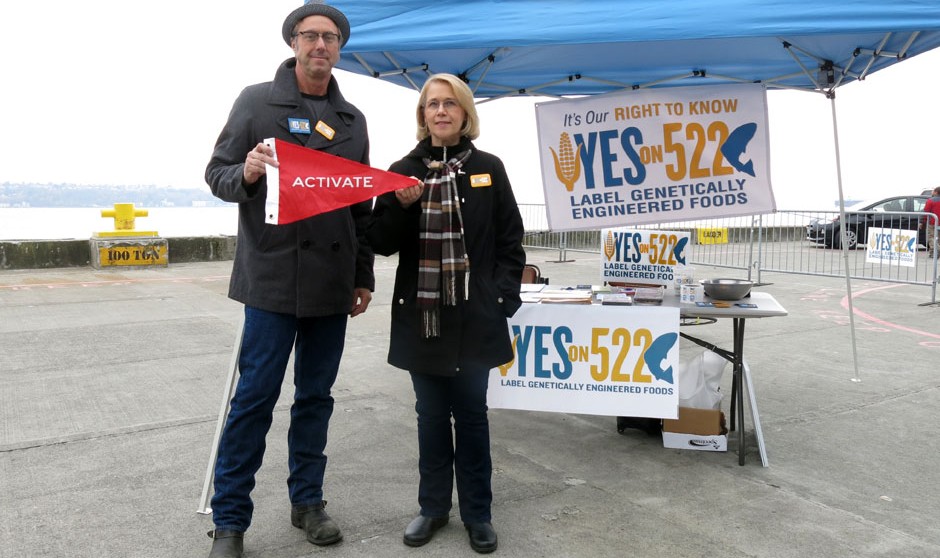
Flag #2: Seattle, Washington
Location: Seattle, Washington
Names: David McConnell and Cindy Black from “Volunteers for I-522”
With only days left until election day, citizens of Washington state are facing the opportunity to make their state a trailblazer in the stand against GMOs. So far only 2 US states, Connecticut and Maine, have passed legislation requiring labeling of GE/GMO foods, but their labeling won’t take effect until other states pass similar laws. If passed Initiative 522 would take effect in 2015 with or without the company of other states, but Washington state’s leadership could help effect similar legislation across the country.
There is much debate and controversy over GMOs. We published an article in our Food Issue detailing some of the concerns: Click here to read more.
One of the main concerns and myths preventing voters from supporting Initiative 522 is that labeling will increase costs for consumers and farmers alike. In truth the farmers and distributors are required to label their foods. They will be given a year to change their labels and no additional cost will land on the consumer.
There are many health concerns surrounding GMOs which is the main reason these labeling laws are beginning to appear on ballots. The issue has already been taken up by Europe. The US is behind on the matter and will hopefully become educated, use their voting power and take their own initiative to improve the quality of our foods.
“Volunteers for I-522” is a grassroots action group in Seattle composed of volunteers working to pass I-522, the 2013 Washington ballot initiative that will require the labeling of genetically engineered (GE) foods. They develop and execute political action focused on raising awareness and engaging voters, such as hosting rallies/marches, speaking tours, bannering, tabling (education), writing Letters to the Editor, and working with the I-522 campaign and other groups both local and national.
To learn more about this group visit: http://volunteersfori522.org/
>
Flag #3: United Arab Emirates
Location: Masdar City, Abhu Dhabi, United Arab Emirates
In the middle of the desert, 11 miles outside of the city of Abu Dhabi, in the United Arab Emirates, a city of the future is being built. With funding coming directly from Abu Dhabi – one of the wealthiest cities in the world – and a design team hand picked from some of the best in the world – this city is being designed to be a leader in the race to living more sustainably on a planet whose capacity we have already pushed too far.
The city is called “Masdar”, which means “Source” in Arabic. The design team is comprised of firms and institutions from all over the globe – representing an international collaboration. The British architectural firm Foster and Partners are responsible for much of the design. The engineering is being managed by the Masdar Institute of Science and Technology with the aid of consultancy group Mott MacDonald and the Massachusetts Institute of Science and Technology (MIT). The city is being designed to rely entirely on solar energy and renewable sources with a zero waste ecology. Solar, wind, geothermal and hydrogen energy will be used to generate the power needed to run the city. Individual cars will be banned and transport will be supplied through solar powered communal transport systems. A solar powered desalination plant will be used to provide the city’s water needs. All plastics and non-organic waste will be recycled and re-purposed. 80% of the waste water will be reused as grey water. The wood used in some of the building projects is palmwood – considered one of the most sustainable wood sources available.
Construction on Masdar city began in 2008. The projected completion date was slated for 2016, but since construction began the same year as the global financial crisis there was an impact on construction plans and the projected completion date is now between 2020 and 2025 – And, while the initial plan was to create a zero-carbon city the city is now aiming to be low carbon.
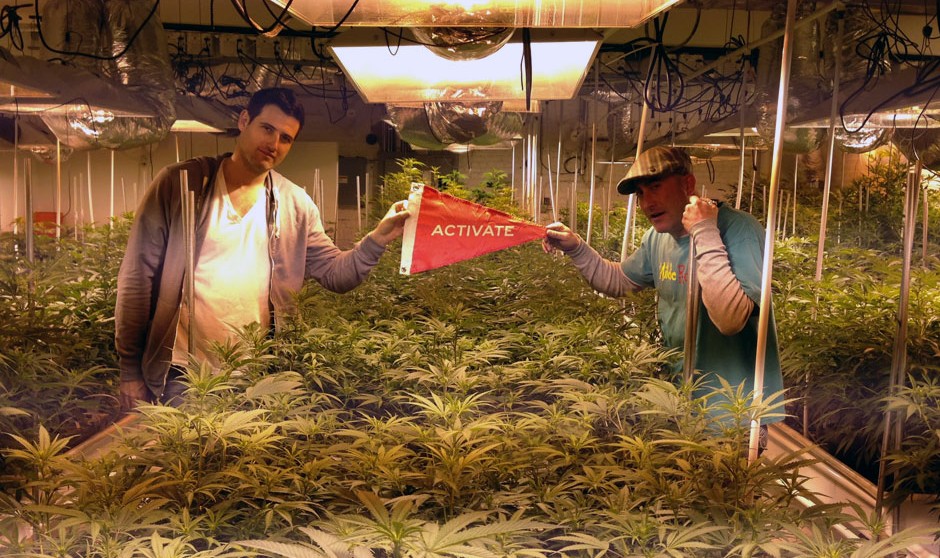
Flag #6: Denver, Colorado
Location: Inside the “Rocky Mountain High” medical cannabis grow facilities in Denver, Colorado
Names: David Weisser and Matt Berger
Medical cannabis is legally used across the country in 20 states. It has been approved to treat the symptoms of glaucoma, multiple sclerosis, Alzheimer’s disease, several forms of cancer, HIV/AIDS, drug dependencies, ALS, Crohn’s disease, diabetes and seizures.
The Rocky Mountain High medical cannabis company’s youngest patient was a three month old child suffering from an average of 20 seizures a day. According to Rocky Mountain High’s CEO, David Weisser, with the use of a small dose of a non-psychoactive CBD tincture the child became seizure free.
The use of medical cannabis, especially for infants, has been a controversial and polarizing debate since Proposition 215 legalized the use of cannabis for medical purposes back in 1996 in the state of California.
The last state to join the list of legalized states was Illinois on August 1, 2013.
>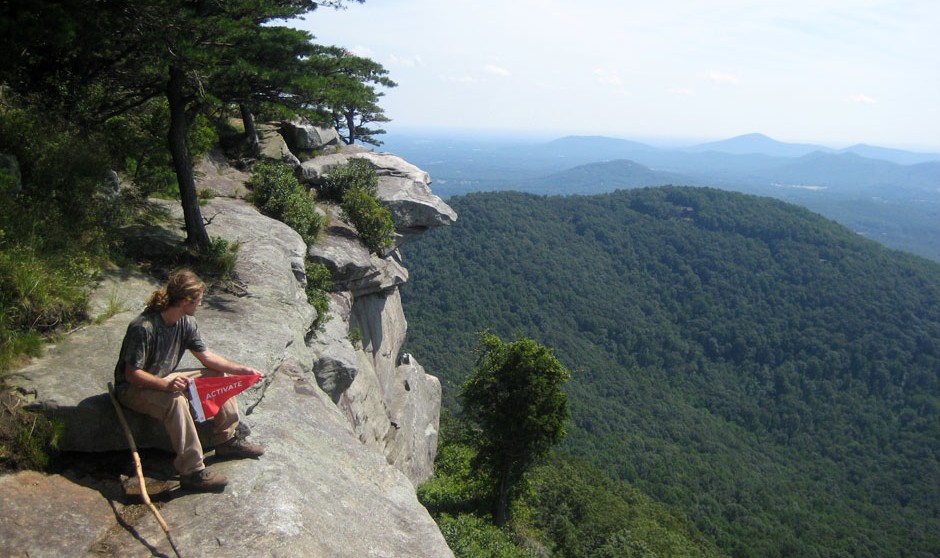
Flag #8: Appalachian Trail
Location: Summit of Mt. Yonah, Cleveland, Georgia U.S.A
Name: Michael Sherman
The Appalachian Trail, or A.T, is a stretch of 2,200 miles of marked trails that begins at Springer Mountain in Georgia and ends at Mount Katahdin in Maine. The trail passes through 14 US states along the Eastern seaboard and is a refuge to some of the last wilderness still remaining in the Eastern half of the United States. A wide variety of flora and fauna such as the American black bear are able to thrive due to the protection of the forest lands surrounding the mountains.
Hikers and nature lovers travel from all over the world each year to hike the Appalachian trail. Hiking the entire trail, or “thru-hiking” has become a rites of passage for hiking enthusiasts. The lure of the Appalachian trail speaks of the history of the founding of the United States of America – it is where much of America’s folklore and folk culture was born and still remains one of its most important national treasures.
At the summit of Mt. Yonah – the Cherokee word for “bear” – the Appalachian Trail can be seen snaking its way north – blue and majestic in the afternoon sun. By hiking these trails a relationship is formed with the land that can’t be known from books or web pages. Once the Georgia clay gets under your skin and in your eyes it passes through your heart and reminds you to protect it.
>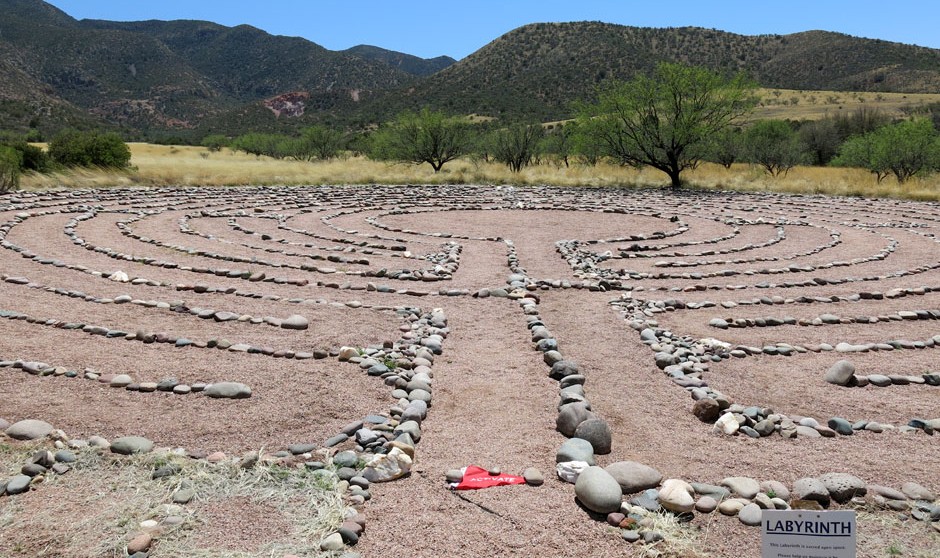
Flag #2: Arizona
Location: Patagonia, Arizona (Tree of Life)
Name: Nicole Davis
The difference between a labyrinth and a maze is that one is designed to draw you in – only to challenge you and trick you into losing your way – while the other is a preset journey meant to allow you to find your way within.
Our Activate flag rests at the entrance of this sacred labyrinth built after the design of the Chartes Labyrinth in France to raise awareness about the inner journey we are all responsible for.
>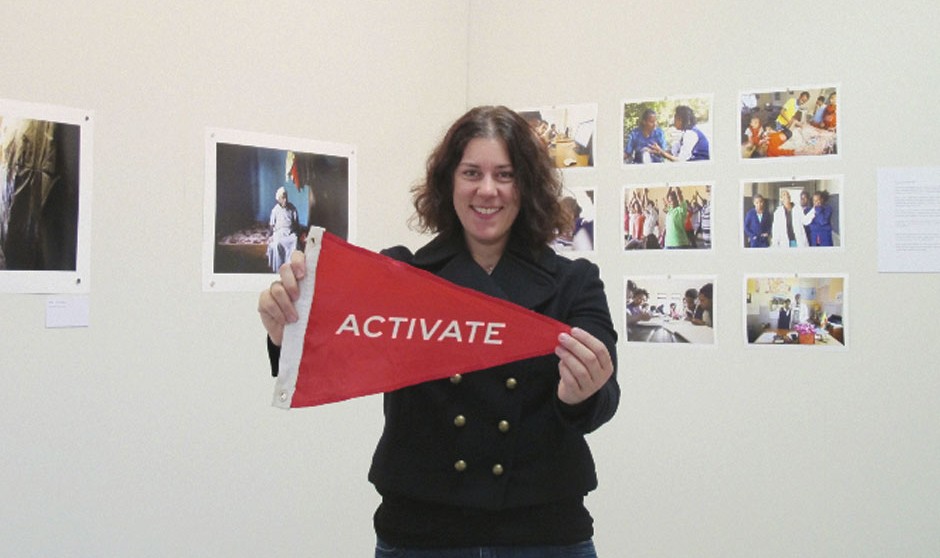
Flag #12: Australia
Location: Sydney, Australia
Name: Kerry Pryor
Text and photo: Roop Gill
Photographer Kerry Pryor is showcasing some pictures in a gallery in the Chippendale neighbourhood of Sydney. Unlike much of the typical work done by this formal textile designer, this particular exhibition features the lives of orphan Ethiopian children that have found a home thanks to an Australia-based foundation, Beyond the Orphanage.
Kerry ended up in Ethiopia almost as a fluke: the photographer who was meant to travel with a not-for-profit group, Eyes for Africa, fell sick and Kerry was offered a chance to go.
“I enjoyed travelling, but I had never been on project like this before,” says Kerry.
But, it didn’t take her long to fall in love with Ethiopia. Along with doing the photography work that was required of her, Kerry also got in touch with Beyond the Orphanage and spent half a day with them.
When, she returned to Africa last year, Kerry spent two weeks taking photos of children for Beyond the Orphanage. She took updated headshots of all the kids, made environmental portraitures, and gave the organization a lot of photos they could use on their website. But, when she returned she felt that she could do more to help.
“I had been really been touched by the work the foundation does,” she says. “Taking the photos for them was great but I wanted to take it even further.”
So, when the opportunity presented itself, Kerry exhibited her work to raise money for Beyond the Orphanage.
“I wanted to make a direct contribution to them and I thought this was a good way,” she says.
Travelling to Africa twice and spending time in these communities has really opened Kerry’s worldview.
“I vouched never to complain if I had to wait 45 minutes for the doctor again,” says Kerry reflecting upon the hardships she saw in Ethiopia.
Kerry is already planning a third trip back to this country that she has fallen in love with: “I can’t wait to go back! The people are amazing. I hadn’t expected this experience to turn out like this at all.”
To learn more about Beyond the Orphanage, visit their website.
To see more of Kerry’s work, check out her page.
>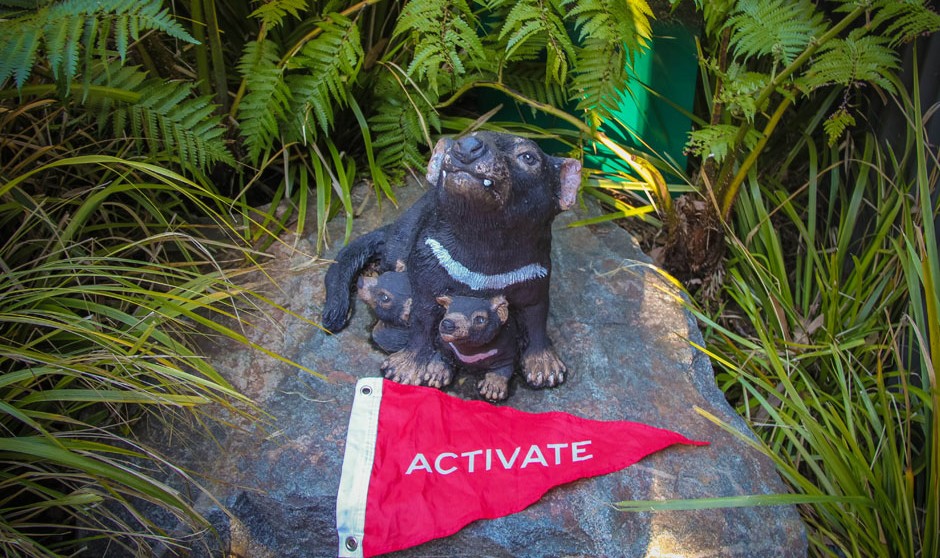
Flag #12: Australia
Location: Toranga Zoo, Sydney, Australia
Name: Roop Gill
Snarling, growling and perpetually cranky, Taz – the Tasmanian Devil– emerges from a vortex created by his own spinning body. This animated image of the ferocious and rather ditzy Looney Tunes character has been inked into the memories of many people my age that grew up in bedrooms full of Bugs Bunny and Tweety stuffed toys – but, the pop-culture version of this feisty cartoon character has little in common with the real-life endangered species.
The Tasmanian devil is the largest carnivore marsupial and is found only in the wilds of the Australian island state of Tasmania. It looks like a small dog and feeds on snakes, birds, fish and insects. The Tassie devil has become an iconic symbol of Tasmania, but in the 1800s, famers tried to eradicate this species because it was believed to be killing livestock. In 1941, the government made them a protected species.
The seemingly little marsupial can eat up to 10 per cent of its body weight in one day. These ferocious creatures often fight each other, making it a commonality to see scars on their faces. The fighting, unfortunately, is also one of the ways in which a contagious cancer has affected 60 per cent of the state’s total population of Tasmanian devils (as per 2010 statistics). The devil face tumour disease (DFTD) started spreading in the late 1990s. This rare cancer is characterized by lumps around the animal’s mouth and head, making it difficult for them to eat. Eventually, they die of starvation. This disease has killed tens of thousands of Tasmanian devils and in 2008, the species was officially declared as endangered.
Efforts are being made to preserve this Australian icon. Breeding programs are in place for unaffected devils, but whether successful research will outrun the cancer is uncertain.
If you’ve bought a stuffed version of Taz, the Looney Tune, after 2006, your money has been funnelled into research for DFTD. If you are too old for toys, but want to help, check out the Save The Tasmanian Devil website to see how you can make a difference.
>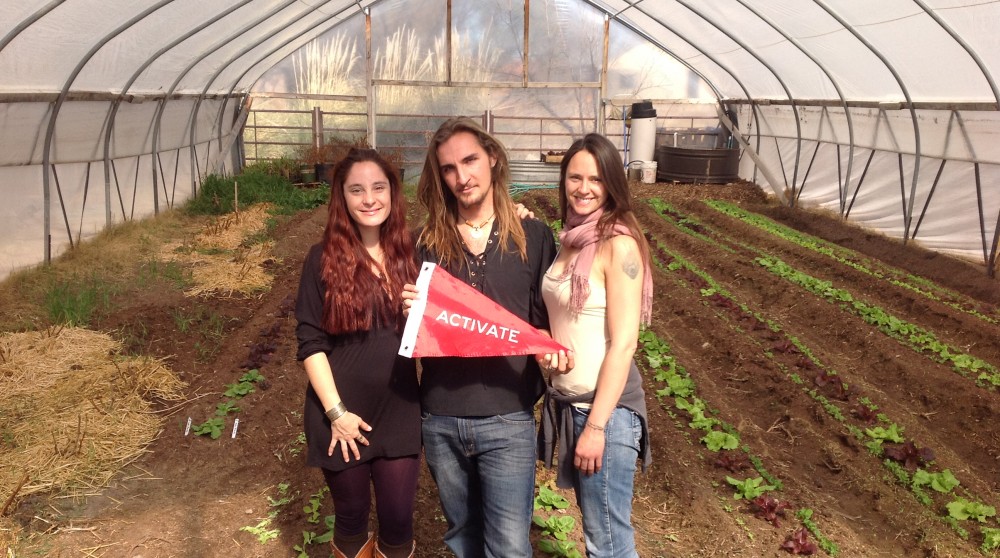
Flag #2: Arizona
Location: Avalon Gardens & Eco Village in Tumacacori, Arizona
Names: Delevan Dell Erba, Amadon Dell Erba, and GenaVein
Text: by Nicole Davis
The way to Avalon Organic Gardens & EcoVillage, one of the largest EcoVillages in the United States, sounds like the beginning of a fairytale—you must drive over a river and through the woods to reach the gates that open onto “Father’s Lane”—a dirt road lined with tall Arizona Cyprus trees and bordered by open pastures, all miraculously verdant in the otherwise desert region of southern Arizona.
“We are a collective of kindred spirits united by a common vision. Being a spiritual intentional community as well as an EcoVillage, our efforts to live in harmony with nature are rooted in our spiritual walk and recognition of the interconnectedness of all life.”
The mission of Avalon Organic Gardens & EcoVillage is clearly stated, and when you walk through the 165 acres of land that hold and sustain the farmland and the village of community members, you can see that their vision has boldly taken root and is thriving.
Within the 165 acres there are 103 resident members that range from infant to elder, living within building structures that vary from a 1920’s adobe home (that was built more than 70 years before the community acquired the land but which has been greatly remodeled and fitted with solar panels) to hand-built whimsical and green sandbag structures designed and constructed by the Avalon community members through their own construction company called Earth Harmony Builders. All the housing structures have been built or retrofitted to align with the most sustainable design practices available today.
“Our goal is to become increasingly self-sustaining. We incorporate modern, cutting-edge technologies with sustainable practices that have been in use for thousands of years around the world, many of which have been abandoned by the unrealistic consumer society we live in today in America,” said Amadon Dell Erba.
Permaculture, which stands for “permanent culture”, was founded in the 1970s on that same principal of combining ancient technology with modern-day advancements in the areas of design and agriculture to create a lifestyle and culture for humanity that would become innately sustainable—or “permanent”—instead of today’s common practices, which are both destructive and reductive to other species and ecosystems.
Avalon Organic Gardens & EcoVillage operates on those same principles and employs the wisdom of permaculture and sustainability to every aspect of life within Avalon and beyond.
Upon my visit to Avalon Gardens my tour guides were the dynamic siblings Amadon Dell Erba and DeleVan Dell Erba, the son and daughter of the original founding members of the community of Avalon back in 1989.
As we walked along, I had a pen and paper in hand and began to list all the features I came to see with my own eyes: grey water recycling systems; rain catchment tanks; a 3-acre permaculture food forest; a permaculture fish cultivation pond; solar power; wind power; compost and recycling programs; a solar oven; onsite schools for the children of each age group; an onsite Equine Therapy program; an amphitheater; free-range chickens for eggs; free-roaming goats for milk and cheese; grass-fed beef. They even had come up with a clever way to keep the shower house of one of their residence buildings warm by creating a greenhouse garden in the foyer.
When we toured the buildings, I could see the care and pride that was taken in creating each design. The intricate details and handmade decorative forms blended with the careful calculations that went into creating buildings of the highest eco-consciousness. The building for the elders on the property was outfitted with special safety and comfort features, like wider shorter steps, hand rails, special showers, and ample sun porches and sun decks to provide extra warmth during southern Arizona’s short-lived winters.
By noon we all sat down to lunch, and I was able to meet some of the members of the community. The food was so incredible that I could barely focus on meeting new people. They had laid out a spread of fresh vegetables and salad from their gardens, with homemade pita bread straight from their handmade adobe oven, hot hearty vegetarian soups, and the best baba ghanoush I have ever had.
What I found most unique and impressive about Avalon is their commitment to activism and in being involved in the world through a number of varied services and programs they offer to the public along with for-profit and nonprofit businesses they have created.
Some of these businesses and services include a nonprofit state-licensed Hospice Care staffed by the community’s resident psychologist, doctor, and several nurses whom are all ordained ministers and all volunteers. (The hospice also has paid outside employees and the service is covered by Medicare insurance.) They also have a farm co-op initiative that provides fresh organic produce grown at Avalon to neighboring families and communities in an area where organic produce is hard to come by. The younger tech-savvy members of the Avalon community work at Global Change Multi-Media Productions, a graphic design, web design, and marketing company founded by Gabriel of Urantia with the vision to help people get their positive ideas to the world. They also have a Spirit Steps Tours company that does eco-friendly tours in both Sedona and Tubac, Arizona, an art gallery, and a publication called the “Alternative Voice”, which—much like Red Flag Magazine—reports on ways we can shift to a more sustainable way of seeing and being in the world. They are currently working on expanding into Tucson where they plan on establishing a raw food and vegetarian restaurant, called Food For Ascension Café, a center for the arts and live music performance venue, called The Sea Of Glass, and a yoga and wellness space in the bustling college neighborhood that runs along 4th Avenue.
Most intentional communities and Eco Villages carve out a little space of Eden for themselves, away from the bustle of the world at large, and tend to become sustainable so they don’t have to interact with society. At Avalon they are fully sustainable and could easily keep to themselves but have chosen to engage with the world and offer a living example of a sustainable way of life.
For additional information you can visit their website: http://avalongardens.org/
>
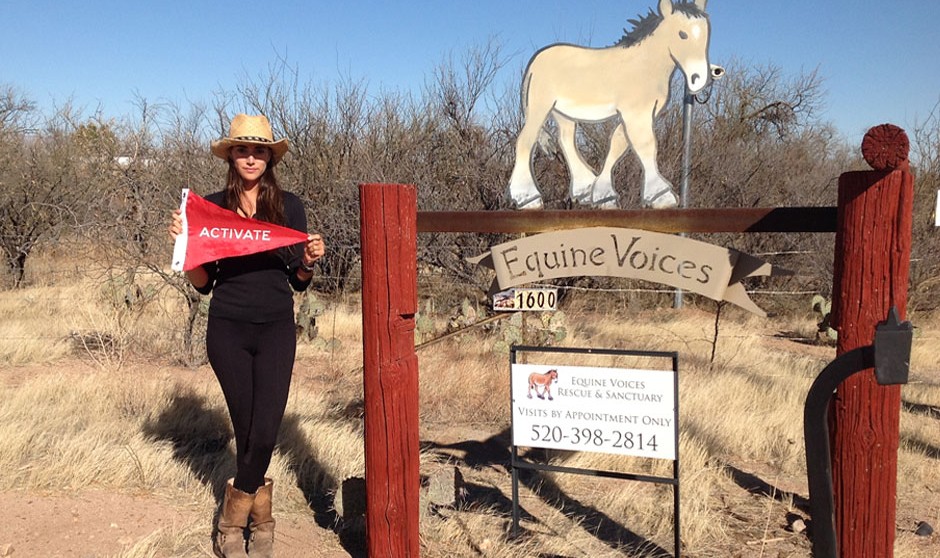
Flag #2: Arizona
Location: Amado, Arizona
Name: Nicole Davis
Equine Voices Rescue & Sanctuary is a 501(c)3 tax-exempt organization dedicated to saving Premarin (PMU) mares and foals from slaughter. They are “… a voice for the many horses that cannot speak for themselves, working to end their senseless slaughter for overseas markets. Through education, we are confident we can enlighten the public about the horrors behind the premarin industry and horse slaughter, and be a catalyst for change so these noble animals may finally live a life without abuse, pain and suffering.”
Many of the horses at Equine Voices are rescues from PMU production facilities. PMU stands for “Pregnant Mare Urine”. The hormones collected from the urine of pregnant mares has long since been used as a source for hormone replacement therapy medications prescribed to women going through menopause. The hormone replacement therapy is called PREMARIN therapy and related products such as PremPro and PremPhase are taken by millions of women every day.
At a PMU facility pregnant mares live each day in cramped stalls too small to even lie down, they are denied free access to water, standing for up to six months in a “pee-line” with rubber collection cups hooked tightly around their urethra. Once they have their foals, they are immediately impregnated and brought back to the “pee-line”. The mares are purposely kept pregnant – similar to the cycle of a dairy cows existence and just like the baby calves born to dairy cows in dairy production facilities, the baby foal born to a mare in a PMU production facility is taken from the mother and immediately sent to auction or to slaughter.
The founder of Equine Voices, Karen Pomroy, is extremely passionate about educated the public about PMU production. She splits her time between caring for the horses at the sanctuary and traveling the country to give awareness raising presentations on the issues surrounding PMU facilities and the rights of horses which vary from state to state.
With recent news that these drugs have been medically proven to cause cancer, blood clots, and other harmful medical conditions in women, Wyeth Pharmaceuticals has cut production of Premarin by 50%. Although in the long run this is good news, currently there are 20,000 stallions, mares and foals without homes. Some are being rescued by individuals, some by non-profit groups, but the majority are sent to slaughter for human consumption.
There are many ways to support the cause. Adopting, Sponsoring or even donating funds to feed the horses at Equine Voices are a few ways. For more information visit their website: http://www.equinevoices.org/horses/.
>

Flag #12: Denmark
Location: Samsø, Denmark
Name: Roop Gill
Nestled in the Kattegat Strait between the Baltic and North seas is the small, sparsely populated Danish island of Samsø, lovingly known as the “Energy Island.” Home to beautiful beaches, holiday homes of many Danes, and a popular music festival in the summer, Samsø garners most of its popularity for something else – it’s remarkable successes in being self-sufficient on renewable energy.
This picture was taken on Jørgen Tranberg’s farm, the rear of which leads up to his wind turbine. In 1998, when the Samsø municipality invited island residents to buy shares in the 21 wind turbines that supply a hundred percent of the island’s energy, Tranberg thought it was a good investment. When Tranberg moved from the mainland of West Jutland to this small island over 30 years ago, he started off with buying a small, inexpensive farm. Since then, Tranberg has made the most of the opportunities available to him on this small island of 4,300 inhabitants, like investing in the wind turbines that started as an ambitious project over a decade ago.
In 1997, the Danish government launched a contest to award a community with funding to become a model for sustainable energy. Samsø’s mayor entered the contest and won. He aimed to make this island completely self-sufficient over the next 10 years by using only renewable energy on Samsø. Even though around $90 million was poured into this project over the next decade to help the island achieve its goals, according to Michael Larson at Samsø’s Energy Academy, it was the people of the municipality that made this project happen. Many of them, like Tranberg, have shares in one of the 21 turbines towering over the island’s stunning landscapes.
“People all over the world are talking about public-private cooperation and innovation, and we already did that 15 years ago in Samsø,” notes Larsen.
Samsø was beyond successful in reaching its goal by 2008 and is now a 100-per-cent self-sufficient, running on soley renewable energy sources. Moreover, 75-per-cent of the heat energy produced on this cold, Scandinavian island is renewable as well. The island of Samsø now has a new goal: to be completely fossil fuel free by 2030 by phasing out coal, oil or gas used for energy production or transportation.
Folks at the Energy Academy in Samsø also consult other municipalities in their efforts to become more sustainable. Larsen is confident that with community contribution, any place could achieve a high level of sustainable energy production.
In the meantime, the wind turbines in Samsø are turning away, producing 66-per-cent more energy than the island needs, while topping off the bank accounts of local shareholders.
>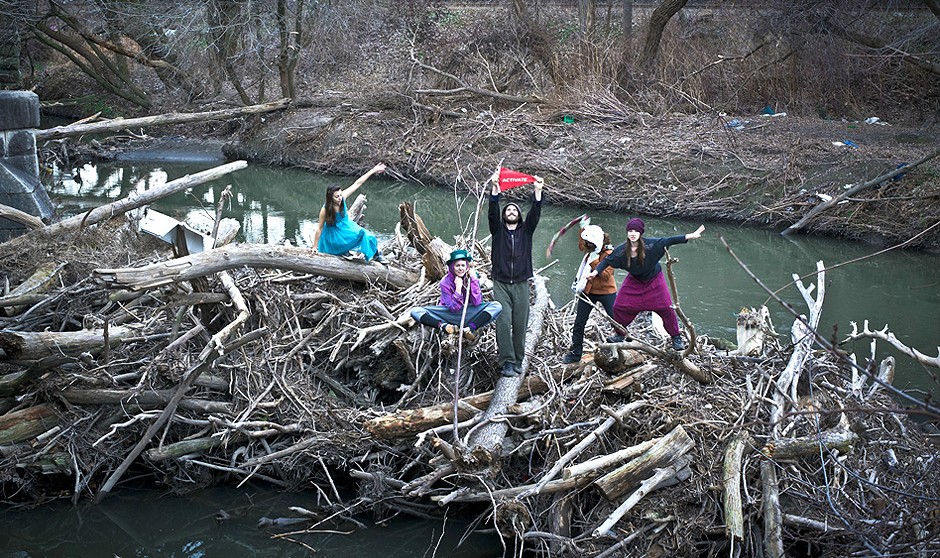
Flag #12: Canada
Location: Toronto, Canada
Name: Maja Zonjic
Image and Words by: Maja Zonjic
When we were children, our parents would stare in awe of every crayon scratch that we drew and every twirl we would manage in dance class. As we entered school, however, the support for our relentless and untainted pursuit of various art forms started dissipating. Instead of being encouraged to develop our own artistic expression, we were told how high to jump, what object to photograph and which colours to paint with. We were graded on our technique, discipline, ability to recite textbooks, and flawless imitation of professors. Our free-spirited artistic endeavors of childhood had become strained. All of a sudden, instead of being unable to do any wrong, we have encountered the superficial reality that there is only one way of doing it ‘right’.
Meanwhile, the society and the media enforced this one-dimensional view of art. Specific styles of painting and photography have been commodified in galleries which have ignored the cultural value of art production, and instead, placed a financial value on the pieces themselves. Dance forms suffered a similar fate through their commercialization in music videos and trick-based performances in upscale venues. As a society, we have been taught – and have subsequently accepted the doctrine that there is a ‘right way to do art’ and that everything that doesn’t fit neatly into the confines of that small, rigid box, simply isn’t. Rather than remaining a cultural practice of idea sharing through creative exploration, art became an industry.
The art scene in Toronto suffers a similar fate. When it comes to balancing the city’s budget and cutting programs, artist grants are amongst the first mentioned by our current political leadership. The remaining grants often inadvertently force artists to pigeonhole themselves into stringent categories to heighten their chances of selection. Yet despite this, some Toronto-based artists have managed to produce incredible work addressing the aforementioned issues.
Lila Ensemble is a 6 member cast of dancers and musicians, including: Jessica Houghton, Chelsea Papps, Raphael Roter, Bea Labikova, Christina Greiner, and Chris Adriaanse (missing in the photograph above). The main principles guiding their work are the development of meaningful and fluid communication through an interdisciplinary approach of movement and music, and the realization that the expressive potential of free and structured improvisation is not only a means of composition, but an end in itself. By tapping into genuine emotionality, Lila Ensemble addresses issues of honest expression and open interaction amongst themselves and the audience. In a culture strongly based on illusion and the presentation of false fronts, Lila challenges the society’s tendency to build walls and encourages the audience to engage in the present moment by stretching their system of beliefs and realm of awareness. Inspired by the concept of divine creative play, they produce work that is rich with fantasy, imagination, and emotion while addressing the issues surrounding the availability and accessibility of improvisation as an art form.
Lila Ensemble frequently performs in unconventional spaces and encourages broader communication amongst the dance and music communities by opening up their rehearsals to emerging artists and seasoned professionals alike. Although all are formally trained, the members of the Lila Ensemble perfectly embody and understand the true meaning of art – the notion that imperfect twirls and crayon scratches are in fact, the building blocks of a diverse and thriving artist community.
For more information, visit http://www.lilaensemble.com/
>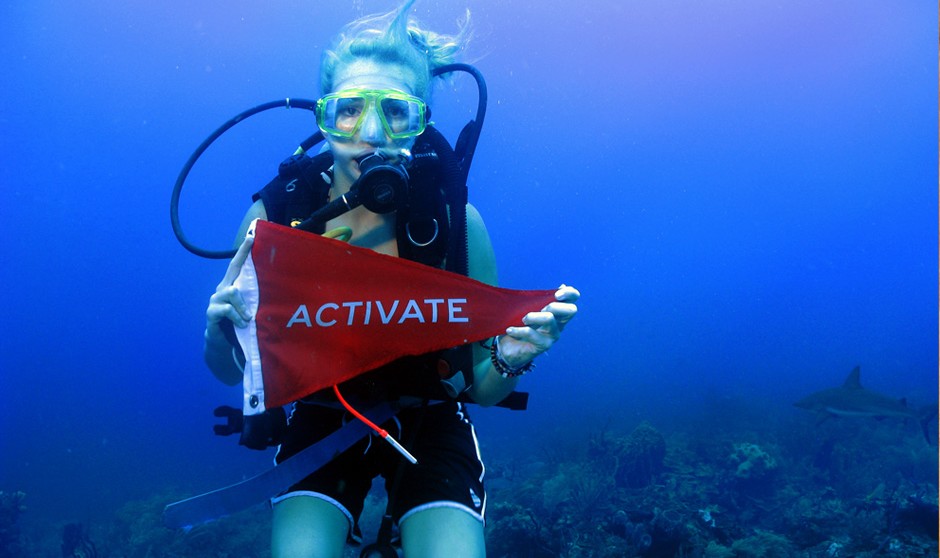
Flag #12: Honduras
Location: Roatán, The Bay Islands, Honduras
Name: Maja Zonjic (In the background: Gray Reef Shark)
Words: by Maja Zonjic
Photograph by: Ian Drysdale
The oceans are the most important ecosystem on the planet, containing life that absorbs most of the carbon dioxide – that we put into the atmosphere – and converting it into the oxygen we breathe. Sharks play a crucial role in the oceans – as apex predators, they are critically important to the fragile balance of the world’s oceans as they keep populations of other fish healthy and in proper proportion for their ecosystem. Recent studies indicate that regional elimination of sharks can cause disastrous effects further down the food chain including the death of coral reefs and the collapse of fisheries. Alarmingly however, sharks face numerous threats that have already had a devastating impact on their population numbers – most notably – unsustainable overfishing. This includes; accidental bycatch, unregulated fishery quotas, lack of legal protection or enforcement for Threatened species, and illegal (and in some cases, legal) practice of shark finning to satisfy the growing demand for Shark Fin Soup.
A recent IUCN report noted that 1 in 3 species of open ocean sharks are Threatened with extinction, or listed as Critically Endangered, Endangered, or Vulnerable. For many of these species, the population numbers continue to plummet – some by as much as 98% in the last century alone. For many shark species, the ICUN lists “shark finning” as one of the leading causes of population decline. Concurrently, some of the species at greatest risk are those that are highly prized in the shark fin trade, including; the Great, Scalloped and Smooth Hammerheads, Oceanic Whitetips, and Great Whites just to name a few. A 2006 analysis by Dr. Shelley Clarke estimated that there are between 26 and 73 million sharks killed each year for the fin trade. Due to a lack of regulation, laws and enforcement in some countries but not others, it is nearly impossible to discern which fins are ‘legally’ obtained and in some cases, from which species.
Additionally, numerous studies have shown that on a strictly financial level, sharks are by far more valuable alive than dead. Separate studies in Australia, the Maldives, Belize, Palau, South Africa, the Bahamas, and Honduras, all indicate that revenue from shark diving significantly surpasses potential shark fishing revenue. In premier shark diving destinations, a single shark can attribute upwards of a million dollars over its’ lifetime to the local economy, as opposed to a one-time profit of a couple of hundred dollars if it is caught and sold. Through my own research, I have seen first-hand the positive effects behind the creation of shark sanctuaries and education-based shark awareness programs.
The Shark Legacy Project was started in 2009 with an objective to estimate the true value of sharks, as both an ecological, and an economical asset to the local communities of Honduras. Giacomo Palavicini, who works for the Shark Legacy Project, has noted an individual Caribbean Reef shark brings in $47,000 per year to the local economy through dive tourism, multiplied by the shark’s age. He also noted that there are additional financial benefits to the tourist-serving properties, such as hotels and restaurants, not included in this estimate. Moreover, incidental sightings of other shark species, including the Oceanic Whitetips and Hammerheads also bring in additional revenue.
Despite these staggering figures, global protection for sharks is still unrealized. At the current rate of destruction, sharks are not a renewable resource and stricter measures need to be taken to ensure the survival of the various species world-wide. It begins by changing our mindset to recognize the importance of sharks to our oceans, and in doing so, to start respecting and protecting them.
Special thanks to:
Ian Drysdale, Healthy Reefs for Healthy People Initiative
Giacomo Palavicini, Shark Legacy Project
Waihuka Divers
For more information:
http://www.healthyreefs.org/cms/
http://www.facebook.com/pages/Shark-Legacy-Project/276492206568
www.postcards-from-utila-film.com
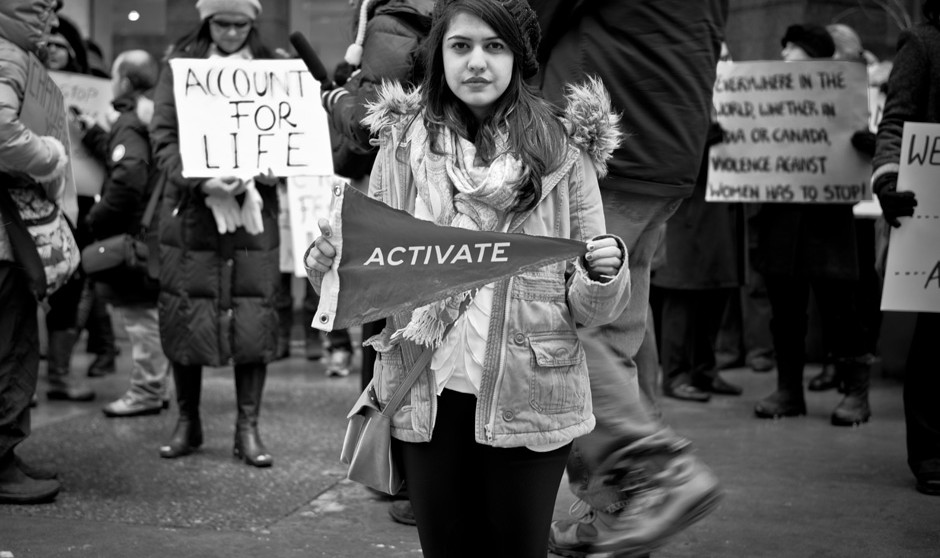
Flag #12: Canada
Location: Toronto, Canada
Name: Roop Gill
Words: by Roop Gill
Photograph: Maja Zonjic
During the final days of 2012, India was erupting with anger over the heinous case of gang rape that claimed the life of a 23-year-old. Protestors took to the streets in New Delhi, where the rape occurred, and other parts of India to raise their voice against the government’s lassie faire attitude towards rape, Eve teasing and women’s rights. In a country, where a woman is sexually abused every 20 minutes, gender equality is a taboo issue that has never gained extensive and continued attention.
The anger and uproar continued well into 2013 and reached my home, here in Toronto, Canada. My Mom and Aunt, both very strong females to look up to, decided that something must be done here in Toronto to highlight this issue to Canadians. Even though Indians leave India, they bring their mentality with them to foreign countries where they reside in. There have been countless incidents of Indian males staring me down when I walk around Toronto. Pretending like I don’t understand what they are saying is the best way to ignore their crude comments on the street. Even though Indian people have been fully integrated into the Canadian society, have they adopted Western principles like gender equality? I don’t think so because I don’t see it around me.
Feticide is a widely recognized issue even in Canada. Boys are favored over girls in many walks of life. Boys are given more freedom than girls in the Indian community. We may have traveled a long distance from our home and roots to escape the social injustices, but have we really come that far?
This photo is from a silent march held outside the Indian consulate in Toronto on January 3, 2013, demanding two things: stricter laws and effective implementation of these laws, and a social change in the mindset of the people. The fundamental change that needs to be seen in the Indian society is how young boys are raised and taught to treat women. If they see their mothers being treated poorly by their fathers, they’ll think it’s OK to do so. If they see that they are being favored over their sisters, they’ll think male preference is normal. Respect for women needs to be instilled in the mind of every young Indian boy from the very first day in order to change the social system of gender inequality and injustice towards women.
They have announced that buses can’t have tinted windows in New Delhi anymore (the girl was raped in a bus by the bus driver, his brother and friends). Similarly auto rickshaws can’t have a curtain on one side that protects the passengers from wind and rain. All this isn’t going to reduce the rape rate in India. A transformation in the way Indians think will. It looks like that transformation has started, but there is a still a long way to go.
>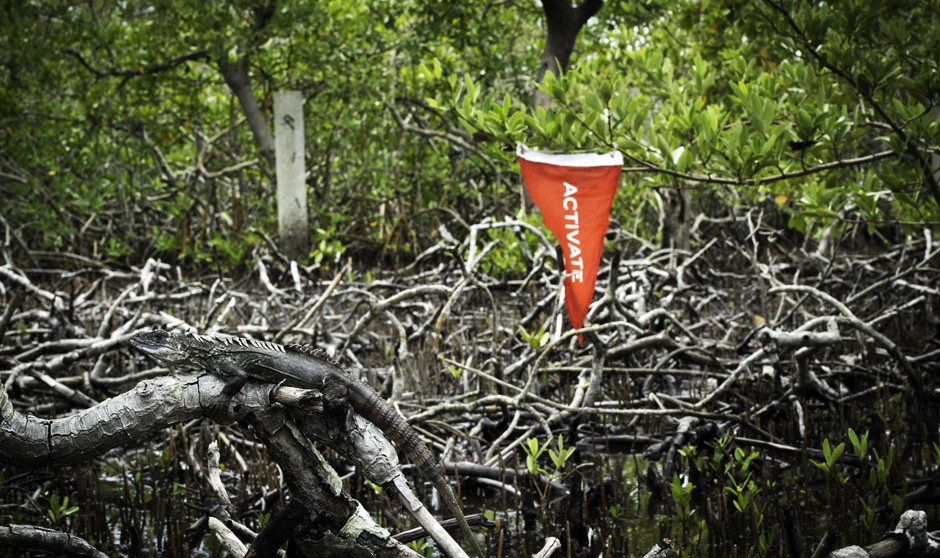
Flag #12: Honduras
Location: Utila Islands, Honduras
Name: Maja Zonjic
Despite being one of the three most productive ecosystems globally – alongside rain forests and coral reefs – the world’s mangrove forests are disappearing rapidly due to the effects of eutrophication, unsustainable construction practices – including coastal/residential development and civil engineering projects – as well as aquaculture conversion. As an invaluable economic and ecological resource, mangroves are breeding sites and nursery grounds for reptiles, mammals, fish, birds and crustaceans as well as sediment, carbon, nutrient and contaminant accumulation sites, renewable sources of wood, and finally, natural barriers against coastal erosion or hurricanes. Although guidelines have been developed by several agencies for the sustainable management of mangroves, many scholars wonder if it is too late for reforestation programs and other initiatives as the loss of biodiversity from old-growth forests is unlikely to be regained, and potentially lost permanently.
In Utila, Honduras, there are 4 mangrove species, the red, (Rhizophora mangle), the white (Laguncularia racemosa), the black (Avicennia germinans) and the buttonwood mangrove (Conosarpus erectus). Lying off the coast of the Mesoamerican Barrier Reef system – the second largest in the world – Utila has experienced a colossal dive tourism boom in the recent decades as one of the cheapest places globally to obtain a PADI Open Water certification. Although the land territory of Utila is only about 40 km2 , with two-thirds – as a conservative estimate – of it under mangrove coverage several decades ago, it now boasts more than 60 dive sites and dozens of dive shops, hotels, restaurants, and related tourist infrastructure. Although already severely decimated, Utila’s mangroves are in danger of disappearing entirely due to factors that could be linked to the recent tourist boom, most notably; anthropogenic stresses and over-population, and in conjunction with it, demand for housing, space and property development. Additionally, in Utila, mangroves are especially important as they house the endemic and critically endangered Swamper Iguana specie (Ctenosaura bakeri) – currently residing in a range of less than 8 km2 globally – and are also one of the only two natural barriers against inclement weather conditions. In 2010, it was assessed by the IUCN as critically endangered due to overhunting and habitat loss / fragmentation and Honduran law has protected the species since 1994, when a hunting ban has been put in place. The Iguana Station has been built in 1998 in order to implement protection, breeding and educational programs to increase the numbers and stability of the Swamper Iguanas in the wild. In the recent years, another NGO and research station, Kanahau, has opened up as well, and currently works in detailed population studies of the Swampers, as well as the island’s other animal species. Conservation activities on the island are difficult to implement and get minimal government support, amplifying the general lack of education surrounding the specie on both the locals’ as well as tourists’ part. Despite the staggering conditions, in my 2011 MFA thesis survey of Utila’s tourists, 60% of those surveyed felt that the mangrove health in Utila is good or fair, and 24% reported the same opinions for the Swampers.
Exacerbating the issue, and despite the presence of two other larger iguana types on the island – the Highlander and the Green Iguana – the Swamper is hunted locally for its meat and eggs. It is considered a delicacy and part of a traditional Utilian diet, and its’ street value is priced at approximately 85 Lempiras per pound – twice the price of beef, and more than three times the price of chicken. It is also important to note is that few people actually hunt iguanas in the mangroves; rather they wait until the gravid females move to the beach to lay their eggs, where they are much easier to catch. This affects two generations of iguanas – the females and the offspring, and many Utilian locals have noted seeing people catching forty at a time, as opposed to one or two to feed the family. The practice of capturing gravid females has resulted in a serious population imbalance, and some conservationists have noted that for every female Swamper, there are two males. They have also said that beans, tortillas and other traditional, sustainable sources of food are inexpensive on the island, and that poverty is not an excuse to capture the Swampers, since most of the islanders can afford the aforementioned alternatives.
With new housing developments and hotel expansions occurring daily and devastating the Swamper habitat, conservationists fear that the fate of this beautiful specie is bleak, unless drastic measures are taken by both the local and national government to protect it. In the meantime, it is up to the locals, and the tourists to do their part in ensuring its’ survival. Simple ways of helping include not supporting the businesses, or developing and buying property that lies on former filled-in mangrove stands, and obviously, not consuming the Swamper iguana. For those who want to do more, both Kanahau and the Iguana Station accept volunteers, and help offset some of their operating costs through minimal volunteer fees. Finally, help spread awareness! See www.postcards-from-utila.com for more details, and check out In the Land of the Swamper in Red Flag Magazine’s Animal issue.
>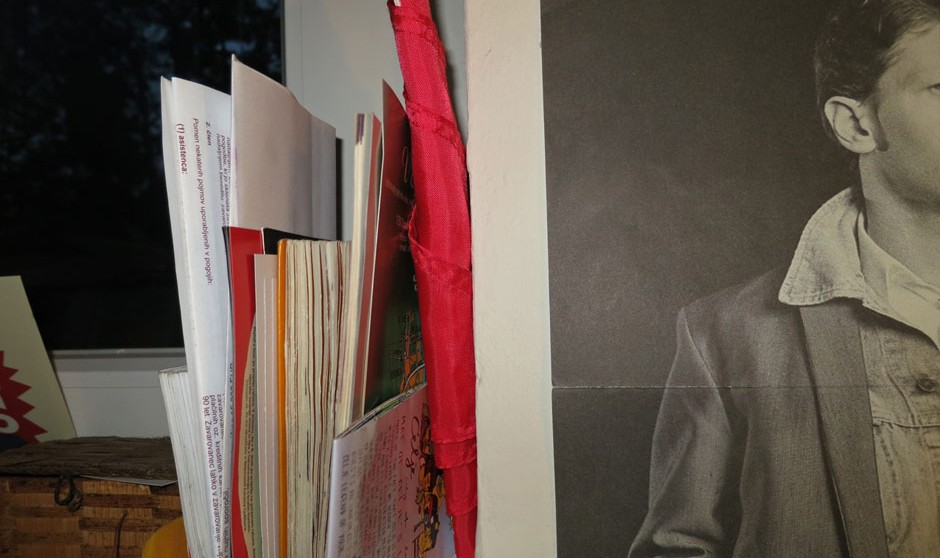
Flag #5: Slovenia
Location: Ljubljana, Slovenia
Name: Kaja Avberšek
I got the red flag some months ago. I rolled it up and put it on the window shelf. I forgot about it. And a clear statement aroused.
There is an information pollution, we have started thinking in a somehow patchwork way, we cannot focus on just one thing at once. As we do so many things at the same time, we make them in a superficial way for there is no time and there are more and more and more things appearing all the time; more attractive, more interesting, more beautiful … we can’t see anymore and we can’t hear anymore. It became difficult to differ between important and unimportant, to choose from the almost infinite pile of things, people, projects, information. We all seem to be very active but the passivity is devouring us. We just don’t care anymore. And that causes concerns.
>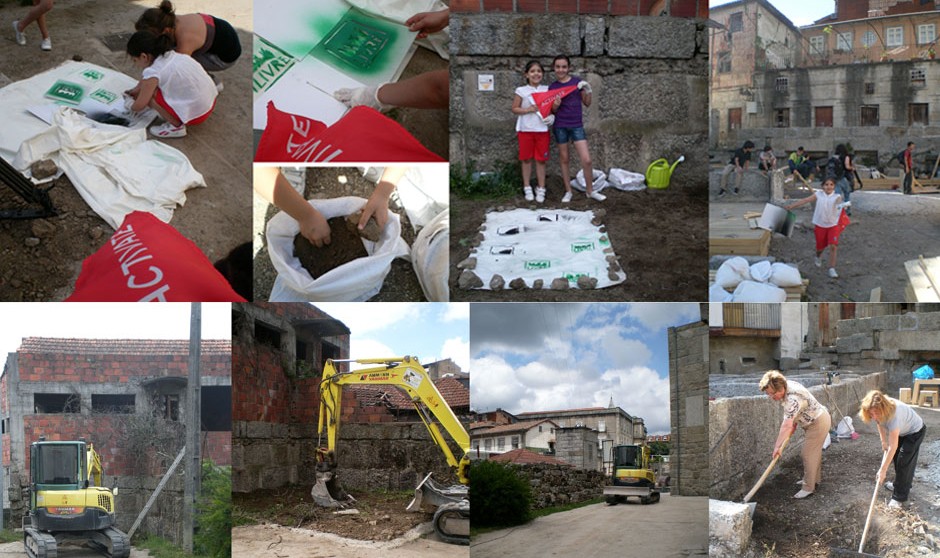
Flag #9: Portugal
Names: Mafalda and Filipa
Location: Porto and Guimarães, Portugal
The project “Retornáveis-Manobrar Ruínas” (Ruins Back On The Move), based in the North of Portugal in the city of Porto and Guimarães, embraces spaces and buildings that have been abandoned and puts them back into use. Some have been partially demolished, others have just fallen to ruin by years of neglect, but most have historical significance.
The mission of Retornáveis-Manobrar Ruínas is to transform the abandoned and neglected into something beautiful and useful again and to show the importance of public spaces for the quality of life in urban areas. Through minor and superficial interventions the spaces are reopened to the people of the city who are also encouraged to channel their creativity to enhance the spaces as well.
These interventions and revivals aim at creating a fluid space with an ever growing flexibility and potential. The first step is to clear the area and check the safety and stability of architectural structures that are present. From the very beginning neighboring citizens are invited to get involved. It is the citizens that get to decide the plans for the design interventions and what the space will be used for. Many areas have become a kitchen gardens for an entire neighborhood. While many people volunteered the children have been the most active.
The success of this project is due to its ability to create synergies, encounters and discussions, debates and proposals for cooperation. The city wants to move, it needs a space to do it, an open, flexible and dynamic space; a quality space.
The project involved the local population. The citizens of the neighborhood embraced enthusiastically and responsibly the realization and maintenance of the spaces and they showed that the city has the will and the means to improve its appearance and the quality of its life even with small actions.
>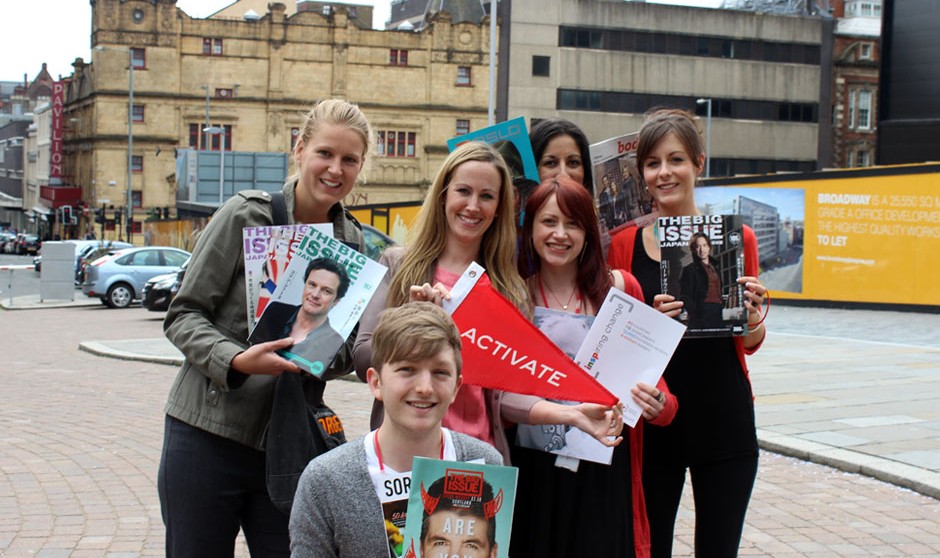
Flag #11: Glasgow, Scotland
Location: The International Network of Street Papers in Glasgow, Scotland
Names: (Back Row from left to right) Danielle Batist, Lisa Maclean, Helen Harvey, Laura Smith, and Maree Aldam. (Bottom row) Sam Best.
The group in the photo are all employees of the International Network of Street Papers (INSP) an organization that found a creative solution to homelessness and poverty: street papers. Through selling 122 different publications in 40 countries, 12,000 homeless vendors on street corners worldwide make a living every day. Vendors buy their street paper or magazine for half of the cover price, and sell them in order to earn an income. At the same time, street papers are distinctive and quality independent media – challenging public perceptions of poverty and social injustice in cities across the globe. Since the founding of INSP in 1994, more than 200,000 vendors around the world have changed their lives through selling street papers. INSP street papers are also an important independent media resource, with a global readership of over 6 million per edition. In the midst of the global financial crisis, the risk of homelessness is becoming greater and more real for tens of thousands of individuals, families, young and elderly people in Europe, America and beyond. The need for street papers is growing and new start-ups include a street paper in Greece, launching this summer. In these insecure economic times, street papers for many are a lifeline. For more info, visit www.street-papers.org.
>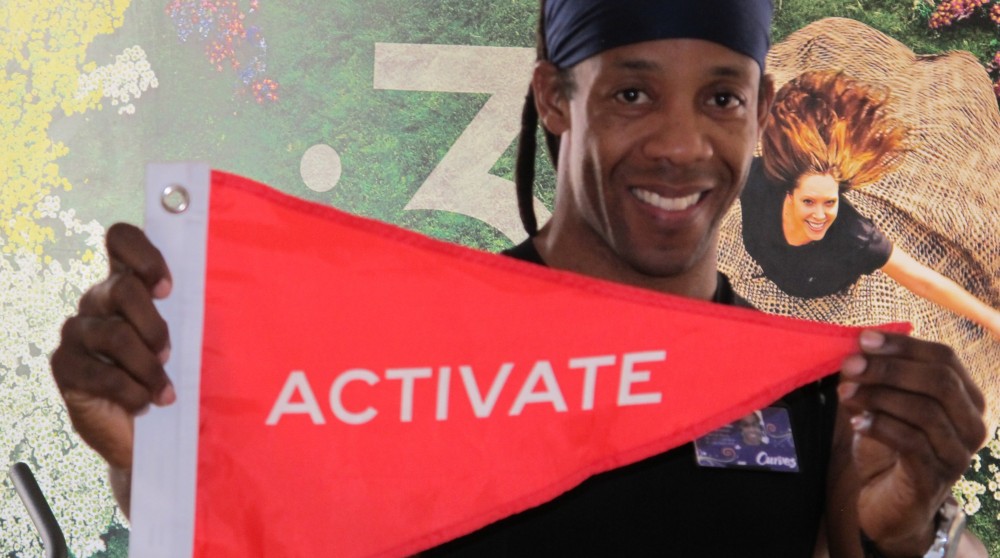
Flag #11: Senegal
Location: Dakar, Senegal
Name: Mickael Lafarge,
Mickael is a fitness trainer at Curves in Dakar. He is passionate about helping women tackle problems with obesity, which is a growing problem in the region. Through fitness he empowers women with the tools to take back control of their health.
>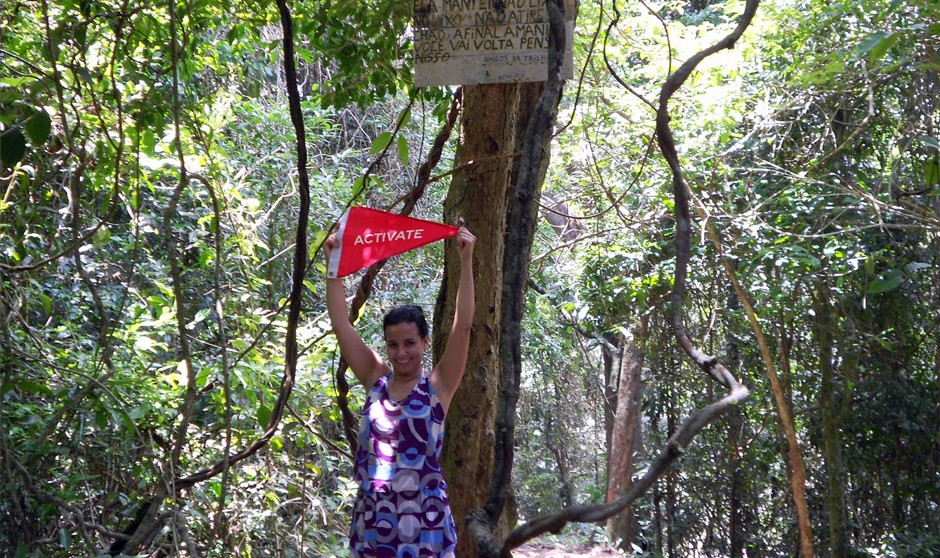
Flag #7: Brazil
Location: Ilha Grande, Brazil
Name: Claudia Pezzolato
The handmade sign above says in Portuguese: “Keep Brazil Clean of Trash and Waste”
The locals finally understand how precious our rainforests are, but despite the local and worldwide attention towards protecting the rainforests for over three decades the current rate of destruction, according to the Rainforest Action Network, is more than an acre-and-a-half every second of every day. Experts also estimate that each day we are losing 137 plant, animal and insect species. That’s 50,000 unique species a year.
>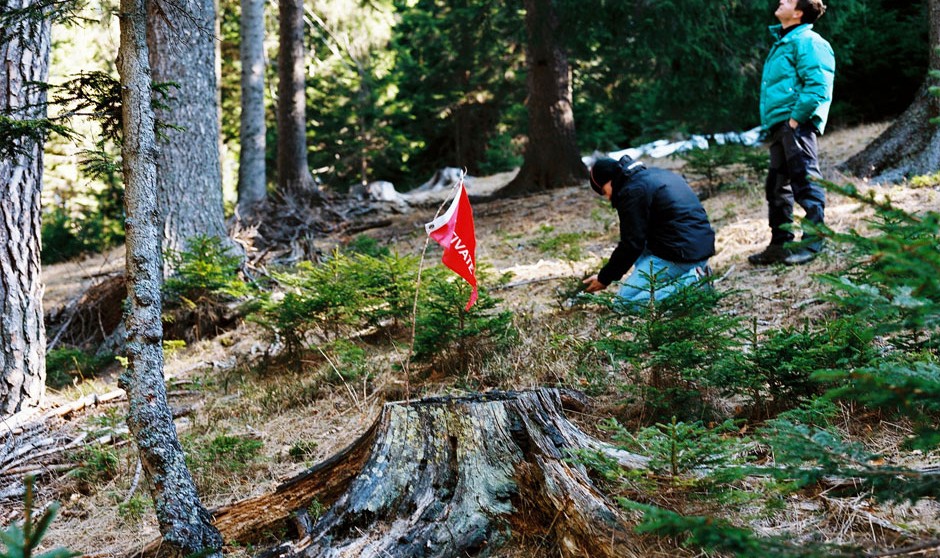
Flag #5: Slovenia
Location: Pahernik Forests – Pohorje, Slovenia
Names: Domen Finžgar and Klemen Jančan: Forestry Students of University of Ljubljana
During the 19th Century, in a mountain range in northern Slovenia called Pohorje, there was, like in most parts of Europe, a significantly higher need for wood to suffice growing industry demands. The result was degraded forestland to a level that severely hindered the forest’s ability to regenerate.
In the 1930s Franjo Pahernik (1882-1976), a forester born in this region, started to advocate forest management based on natural processes. This principle now called “Close-to-Nature” tries to conserve forest ecosystems, while still reaching desired economic goals. Preservation, restoration and sustainability are the first priorities, while production and economic profit from forest commodities comes second. With these values in place the Pohorje forests recovered and were renamed The Pahernik Family forest after the visionary that saved them.
It’s amazing that this logical and almost simple way of dealing with degraded forestland was considered visionary due to the prevailing practice of degrading nature primarily for economic gain despite the consequences. The Close-to-Nature approach was recognized by Slovenian governing officials as a law that needed to be enforced. Today Close-to-Nature principles are mandatory for managing all forests in Slovenia.
Unfortunately, Slovenian forests make up only a small slice of the planet’s forest ecology. The largest devastation of forest landscape is happening right now in Tropical forests all over the world. We are losing the world’s lungs because not everyone in charge of our planet’s forests have recognized how vital it is to manage them sustainably. Unlike temperate forests, damage to tropical forestland is almost irreversible because of the thin soil layers and faster erosion rate. The use of sustainable models for managing those forests is therefore even more urgent!
Forest management based on natural processes is also very challenging, because one must know many things about forest ecosystems before they can take action. Only with knowledge about soil, dendrology, zoology, climatology…can there even begin to be an understanding of how this complex ecosystem works. Without the basic knowledge about ecosystems in general, every action in the environment of any kind (even cities) is a risky decision.
Spreading this “basic” knowledge is done mostly on university level, so it unfortunately does not reach many people. Keeping that in mind I think that one of our responsibilities as forestry students is also to activate and start spreading the word to a wider audience.
For more information about Forest management based on natural processes visit ProSilva website. We also invite you to come learn in Slovenia!
>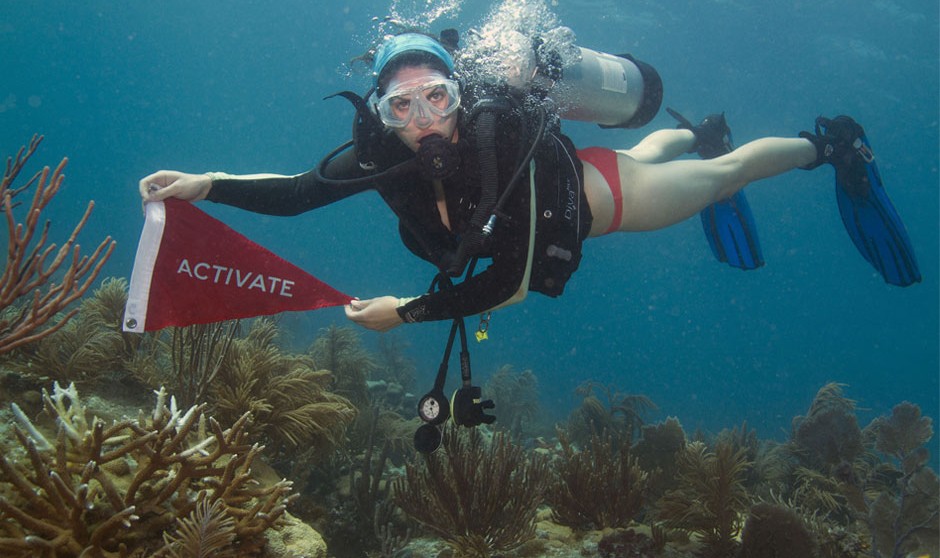
Flag #2: Miami, Florida
Location: Miami, Florida
Name: Rachel Silverstein
Coral reefs protect coastlines, and reef fish feed an estimated 1 billion people a year in Asia alone. Worldwide, reefs proved 375 billion dollars a year of goods and services, and locally, coral reef related activities bring an estimated 4 billion dollars a year to the Florida Keys alone. But, we have also seen live coral cover decline spectacularly from over 50% in the 1970’s, to under 15% in 2002, from threats like pollution, disease, overfishing, and climate change.
This photo was taken just off of Key Biscayne, Florida. I am raising the flag over a colony of Acropora cervicornis, or “staghorn” coral. Staghorn coral is important because its branches create habitat for fish and small marine critters. It was recently one of two corals that were the first to be listed as “threatened” on the Endangered Species list, largely due to the steep decline in their population since the 1970’s. Now their populations are so low that coral nurseries have sprung up throughout the Caribbean to try to restore these important coral species.
>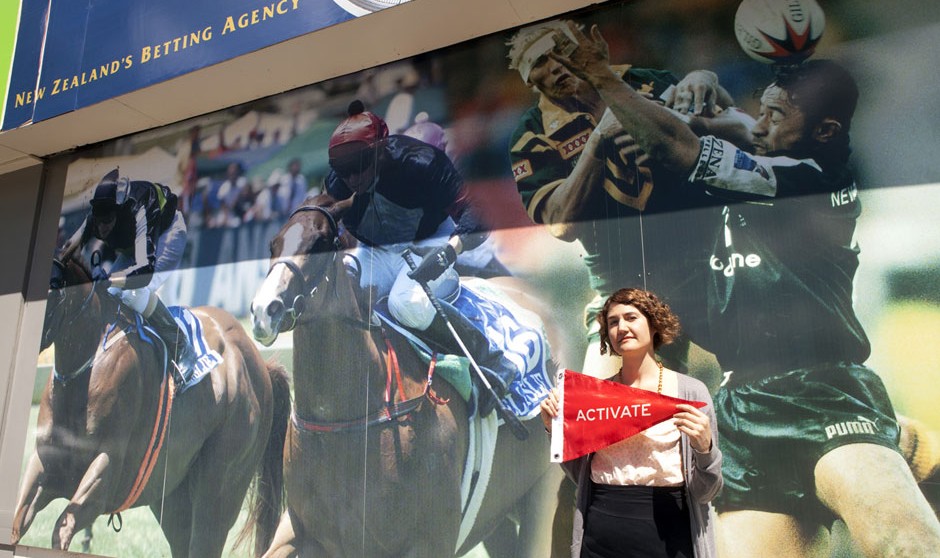
Flag #12: New Zealand
Location: Hamilton, Waikato, New Zealand
Name: Keeli McCarthy
Thoughts of New Zealand tend to elicit grand visions of the earth’s natural beauty – the great Southern Alps, volcanoes and beaches abundant. Yet on a recent February summer Saturday afternoon, I met Keeli McCarthy in a little corner of Steele Park in the Hamilton East section of the fourth largest urban area in New Zealand. She is co-founder of the Greyhound Protection League of New Zealand (GPLNZ), a small organization working to raise awareness of the plight of greyhounds born into a life of racing in paradise, beasts of burden stuck on two islands in a corner of the south pacific. We sit in the shade and chat. Keeli tells me that the greyhound is the only dog mentioned in the Bible and the first dog bred by humans. Admittedly, I don’t know much about greyhounds, but soon I’m learning more and beginning to understand. Though exceptionally fast, greyhounds are fragile animals and the physical exertion during races can cause fractures, sprains and torn muscles. Young, otherwise healthy dogs that are seriously injured are often euthanized. In New Zealand, there is no independent body to formally oversee these racing dogs’ welfare.
Throughout New Zealand, most bars tend to have a TAB, similar to Off Track Betting in the United States. Run by the New Zealand Racing Board, a TAB is found in almost all sports bars in New Zealand and gambling is omnipresent throughout these establishments. When the sports bar/TAB is open, betting is taking place, often on greyhound racing. Keeli and I finish chatting and head across the street to a TAB. The sky is blue and it’s a warm afternoon. We shoot a few photographs in the parking lot and though we’re in New Zealand, it feels like we could be in a parking lot in Florida. We go inside and a number of men are gathered around television screens watching horse racing. The day’s greyhound races are posted the wall. Keeli breaks out the red flag beside the racing sheet. A few men look over at her briefly, but take little notice, they gaze back to the television, to the races, to a stupor with visions of riches. Keeli says hello to one of the gamblers, though I don’t think he says hello back. We take a few photographs and decide to head back outside. It’s a beautiful day and we’re standing in a parking lot surrounded by two liquor stores, a gambling centre and a McDonald’s. It doesn’t take much to realize that for Keeli and GPLNZ, there is still much work to be done.
For information on how to help visit www.greyhoundprotectionleague.org.nz
>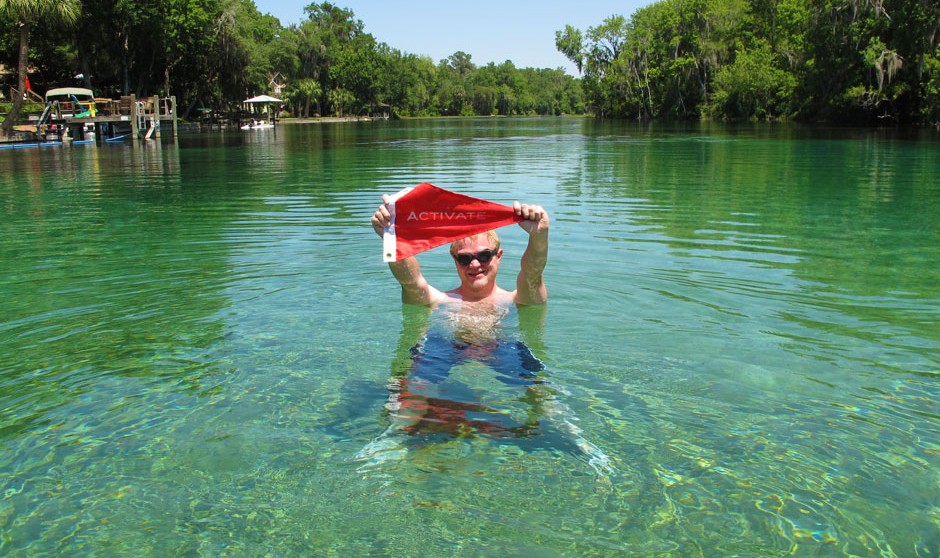
Flag #2: Rainbow Springs, Florida
Location: Rainbow Springs, Florida
Name: Christopher Hale
We caught up with Christopher while canoeing through Rainbow Springs natural springs and freshwater river in Rainbow Springs, Florida. Archaeological evidence indicates that people have been using this spring for nearly 10,000 years. Christopher was using it to train for an upcoming triathlon despite the fact that the Rainbow River is home to dozens of alligators and freshwater snapping turtles.
Rainbow Springs is Florida’s fourth largest spring out of over 40 natural springs that run from central Florida up through the northwestern corner into the panhandle. Zephyrhills is the most widely known of Florida’s springs, as made popular by Zephyrhills bottled water brand a product of Poland Springs and Nestlé Waters North America. In 1987 Nestlé took over Zephyrhills and a number of spring heads in Florida state as part of their expanding bottle water venture. Nestlé Water North America’s business model is to seek out the freshest purest spring water all over the country and then bargain with the local government to gain private rights over the water which they then sell for a profit.
For more information on how to visit and protect Florida’s natural springs click here
>
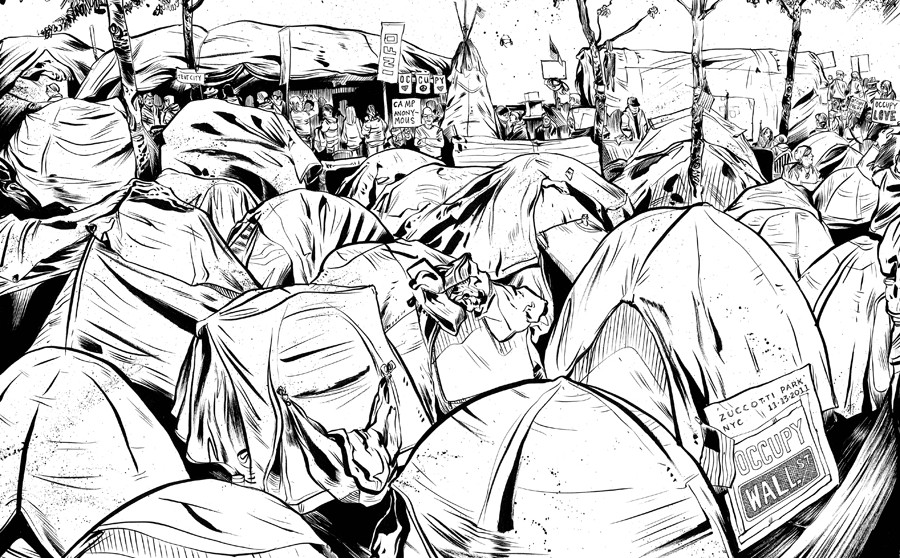
Flag #6: Zuccotti Park, New York
Location: Occupy Wall Street – New York, New York
Name: Joshua Boulet
Joshua Boulet is an artist who camped out at Occupy Wall Street and began documenting the scene through his meticulous ink drawings. The photo of Josh was taken on October 29th during the first snowstorm to hit New York since the Occupation began. Josh, who had taken retreat from the bitter cold inside his tent, still had his sketchpad and pen in hand despite the weather. For more information about “Draw Occupy Wall Street” click here.
>
Flag # 11: Senegal
Location: Dakar, Senegal
Name: Mamadou Diop,
Mamadou Diop and his fellow university students have been protesting against teacher strikes over the last few weeks and more recently against the Senegalese President Abdoulaye Wade who is seeking a third run at elections at the end of this month. Wade’s candidacy goes against the constitution, which he amended in 2001 to restrict presidents to two seven year terms, but now says it only pertains to his section term when he was re-elected in 2007. Clashes with the police broke out earlier in the month in protest over this bid, and a fellow schoolmate of Mamadou’s (also called Mamadou Diop) was killed when a truck ran over him. The Friday this photo was taken, the students, along with an opposition coalition, had called for a moment of silence during the afternoon prayer in Dakar’s city center and I caught up with Mamadou only hours before.
>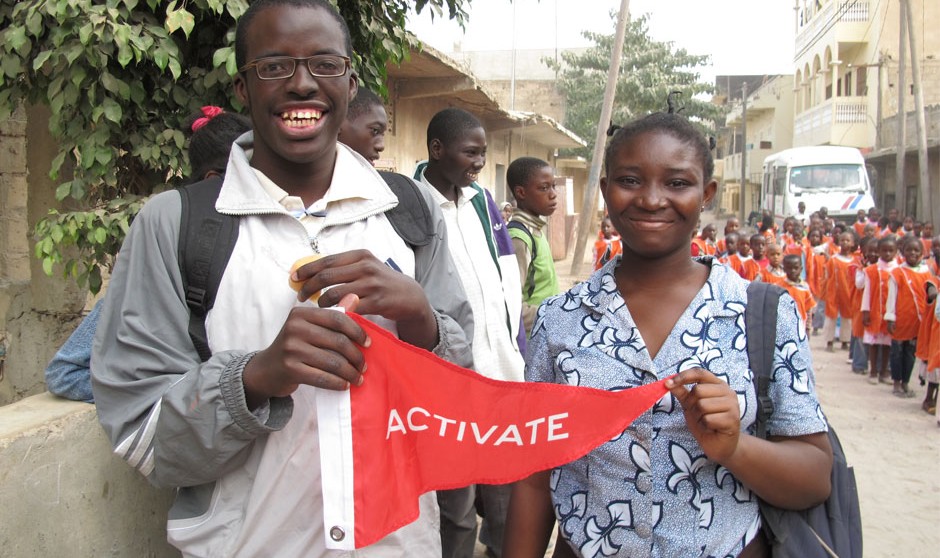
Flag #11: Senegal
Location: Dakar, Senegal
Names: Babacar and Khady
Babacar and Khady are two students taking part in an educational exchange program between a school for intellectually deficient children and a regular public school in Dakar. This mainstreaming educational program is helping overturn the social stigmas associated with mental deficiencies in Senegal.
>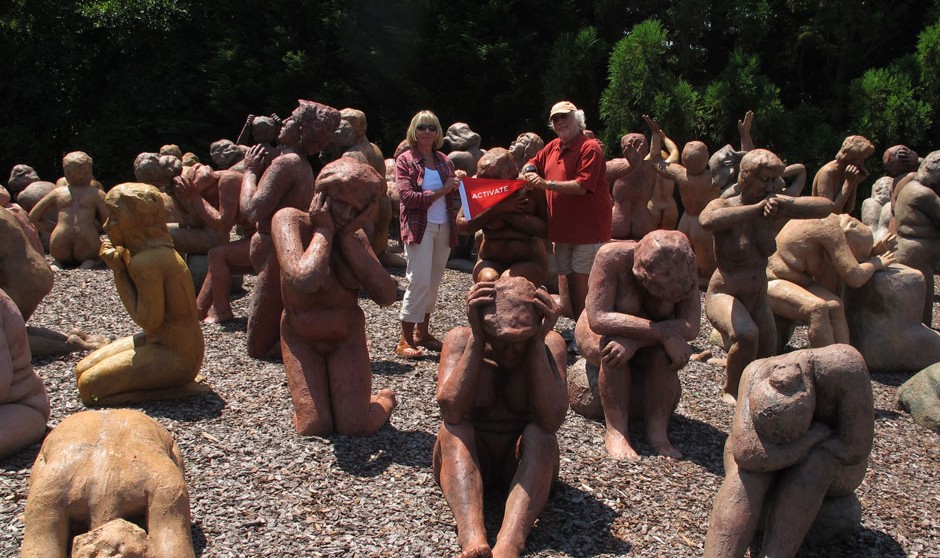
Flag #6: Montauk, New York
Names: Suse Lowenstein and Peter Lowenstein
Location: Montauk, New York
On December 21, 1988 Pan Am flight 103 bound for John F. Kennedy Airport exploded over Lockerbie, Scotland. All 259 passengers on the flight died along with 11 people on the ground. 176 of the passengers were Americans. 36 of them were from Syracuse University. It was the largest terrorist attack to date on Americans.
After months of investigation the trail of guilt led to Libya and the command of Colonel Muammar Gaddafi. However, Libya and Gaddafi did not concede guilt until 2003. The terrorist responsible for the act, Abdelbaset Mohmed Ali al-Megrahi was convicted of murder by a panel of three Scottish judges and sentenced to life imprisonment in 2001. He was held for 8 and a half years, only to be released in 2009 to be with his family as part of Scotland’s law of compassionate grounds in the event that a convicted prisoner is in such poor health that natural death is imminent. 3 years later Al-Megrahi is still alive and free.
One of the passengers on flight 103 was 21-year-old Alexander Lowenstein also a student of Syracuse University and the son of Suse and Peter (pictured in the photo above). Alexander’s mother Suse is a lifelong artist and sculptor who found a way to grieve through the act of creating her work. Over a period of several months Suse met with mothers who had also lost loved ones on flight 103 in the quiet space of her studio to relive the moment when the shattering news entered their lives and changed them forever. Suse photographed the women as they experienced the physical memory of the tears and screams. She then used those images as the basis for the forms she would then create on a large scale from plaster. The final result is called “Dark Elegy” a large-scale installation and memorial to the attack on Pan Am flight 103 and to all acts of terror. The installation is currently open to the public on her property in Montauk, New York, but will soon be cast in bronze and moved to a more accessible public space.
This photo was taken after Gaddafi was killed this past October by NLA fighters in Libya.
>
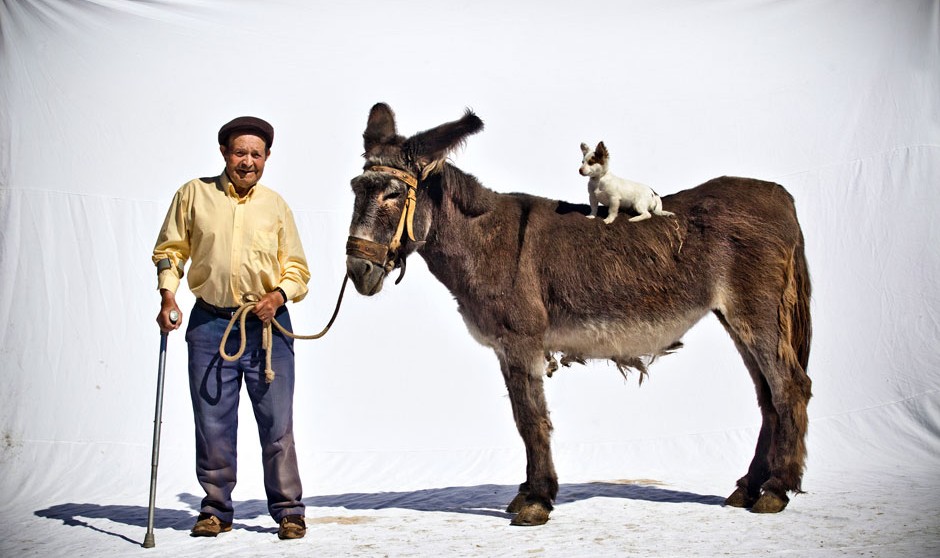
Flag # 9: Portugal
Names: Miguel Nóvoa, Gonçalo Mota, Manuel De Sousa Gomes, Anna Brufau, João Pedro Marnoto (holding flag), Patife, Violeta Vilaça, Nuno Martins, Joana Braga, Oscar, Rui Quina
Location: Highlands of Miranda do Douro, Northeast Portugal
The group of people featured in the image is a small sampling that represents the larger organization of the A.E.P.G.A. (Association for the Study and Protection of Asinine Cattle). Many organizations are committed to various social and environmental causes, but it is very rare to find a group committed to protecting one specific breed of donkeys! The image was taken in the mountain range where the Donkeys derived.
In collaboration with photographer João Pedro Marnoto (holding the flag in the main image above) A.E.P.G.A launched an awareness raising initiative called “Faith in Donkeys” as part of their mission to enhance the usefulness and importance of human-animal relationship, with special relevance to the donkeys, mules and males in the county of Alfandega da Fé, in Northeast Portugal.
“We are looking for the presence of an ancient world that still resist the avalanche of modernity, and especially those who watch and resist its demise.”
Despite AEPGA to be an association whose main purpose focuses on rehabilitation and maintenance of the Miranda Donkey breed, the donkey and the asinine cattle in this project take on a symbolic role of representing the cultural and natural wealth of the region. Through the presence of this animal the AEPGA encourages people to discover the everyday facets of their owners – their material culture, craft knowledge, oral tradition, folk knowledge, and their deeper feelings and emotions.
The image directly above is from a series titled “Faith In Donkeys” a photo project by photographer João Pedro Marnoto for the AEPGA.
>
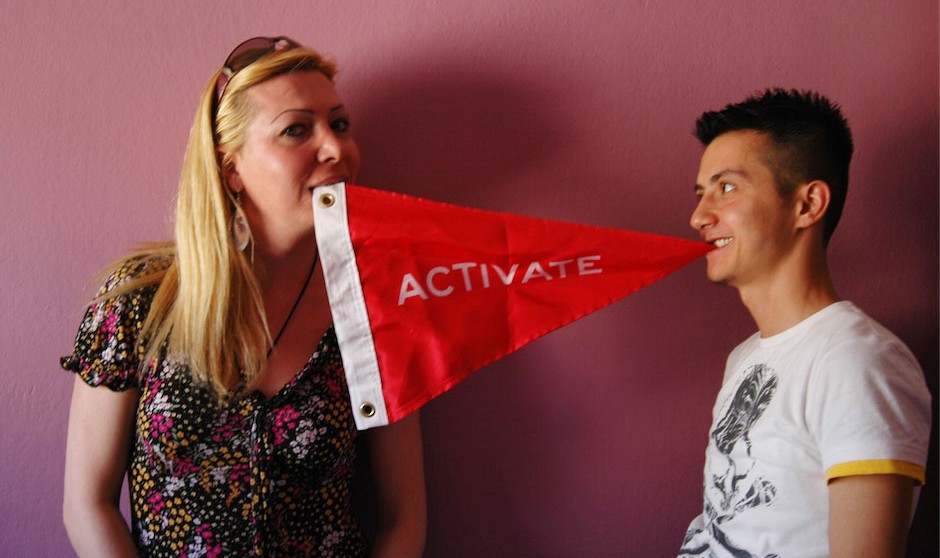
Flag #4: Ankara, Turkey
Names: Sinem Kuzucan (left) and Aras Güngör (right)
Location: Ankara, Turkey
Sinem and Aras are transgender and gay activists specifically dedicated to the rights of Lesbians Gays Bisexuals and Transgenders in Turkey and for the rights of Turkish sex workers. Prostitution is legal in Turkey and is regulated by the Turkish government under article 227. However, in recent years there have been a number of near fatal attacks aimed at transgender and gay sex workers in Turkey.
Simen and Aras are part of a group called Pembe Hayat a LGBT Solidarity Association established in Turkey in 2006 by transgender sex workers in reaction to these attacks. The group works with transgender human rights defenders and transgender sex workers who face ongoing threat in Turkey. “Pembe Hayat” means “Pink Life” in Arabic. The group aims to “provide a safe space for transgender sex workers, provide legal and psychological assistance to the community, and carry out advocacy work for the betterment of the existing legislation.”. The organization has faced several threats especially from gangs who are overtly transphobic and have even been raided by the Turkish police force. For more information on the work of Simen and Aras and Pembe Hayat go to www.pembehayat.org
>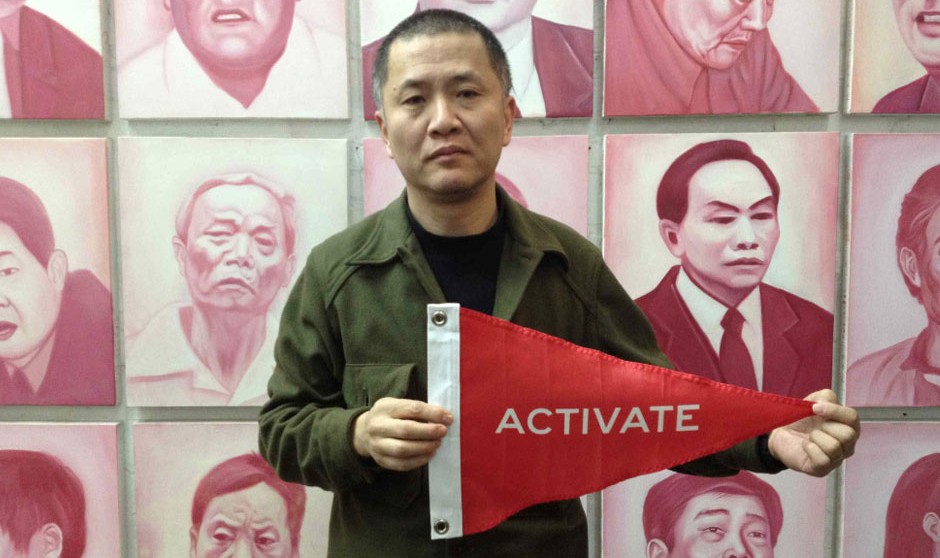
Flag #3: Beijing, China
Location: Beijing, China.
Name: Zhang Bingjian
>
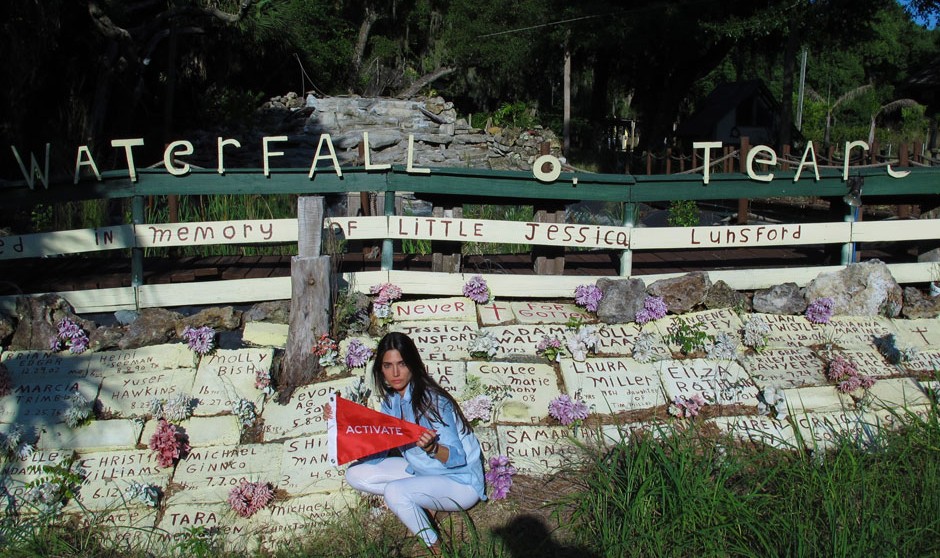
Flag # 2: Leesburg, Florida
Name: Nicole Davis
Location: Leesburg, Florida
On July 5, 2011 an Orlando based jury found Casey Anthony not guilty of killing her 2-year-old daughter, Caylee Marie Anthony. I had heard of a memorial called “The Waterfall of Tears” built by a father of two in Leesburg, Florida after the rape and murder of Jessica Lunsford a 9-year-old girl from nearby Homosassa, Florida in 2005. He couldn’t fathom how such a violent act could befall a child and so he built a small stone memorial to her in his front yard. Over the years he added more and more names to the memorial as more children became victims of murder all across the country. He also added names from the violent past – like 5-year-old Adam Walsh also murdered in Florida in 1981 and JonBenét Ramsey murdered in Boulder, Colorado in 1996. When Caylee Marie was found dead, Don Williams added her name too.
After the Anthony verdict, as a native Floridian, I felt compelled to visit the Waterfall of Tears site. I tried to reach Don, but couldn’t get through to the number listed for his home. All I knew was that the memorial was on Radio Road in Leesburg, Florida. When I got to Radio Road – a long wide rural stretch – it felt like I was on a search for a needle in a haystack. Up ahead I saw a church and decided to pull in. I flagged down a women about to step inside and asked her if she knew where the “Waterfall of Tears” was. She said, “You mean the memorial to all the dead babies?” in a thick southern drawl. I nodded and she pointed the way.
When I finally arrived at the site the memorial was in disrepair. Several letters were missing and the flowers had long since died and dried in the sun. I walked up the long driveway intending to introduce myself to the owner of the home and the creator of this unique memorial, but the house was boarded up. A tree house had fallen into the driveway and eviction notices were slapped on every door. The housing crisis had gotten Don Williams and his family too. All that is left of his legacy is his deep compassion for the lives of the innocents lost in the stones of the “Waterfall of Tears”.
>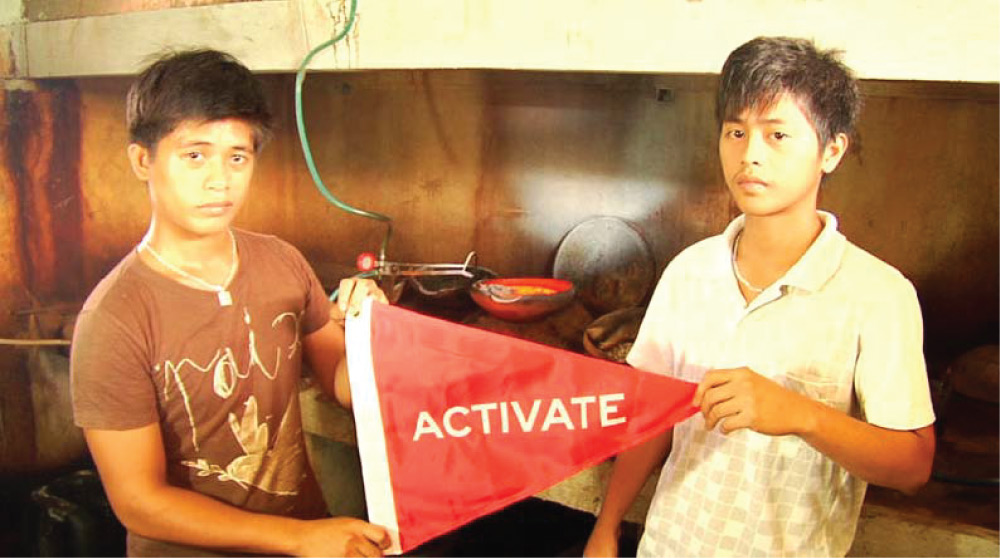
Flag #1: Southern Philippines
Location: Mindanao Island, Southern Philippines – The situation for rural, novice, amateur miners here is dangerous and grave. Mining is a way of life in the rainforest highlands of Mindanao Island in the southern Philippines. Much like fishing or farming is passed down from generation to generation, mining is a familial trade here. However, fathers routinely die young due to their highly unsafe mining practices adhering to no modern or standard techniques. The young men in this photo are brothers. One is still under the age of 18.
They pick up axes, crobars, or sometimes simply their hands and strike away at rocks. They then grind the rocks down and simply blend the mixture with mercury which dissolves away impurities and reveals gold or silver. The process is done using their hands. The mercury then seeps in and day by day, week by week, leads to disease and death at an early age.
>
